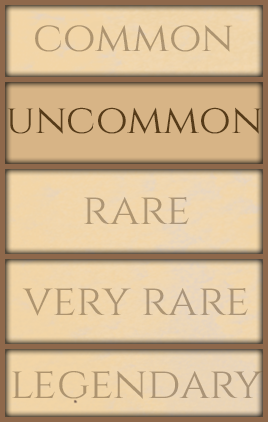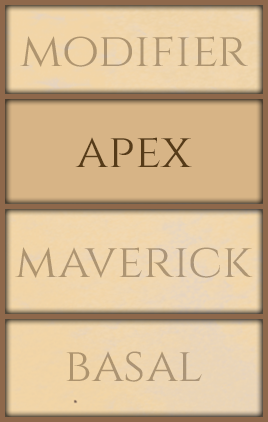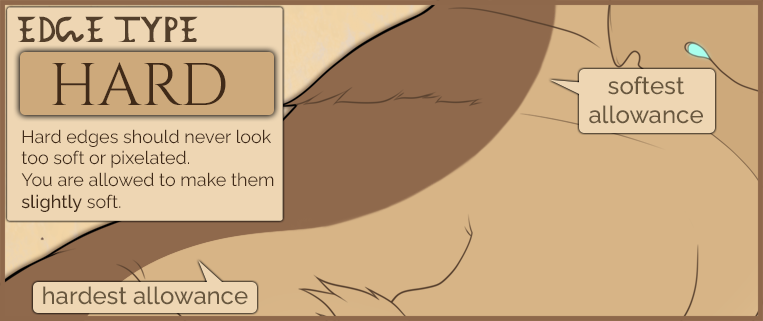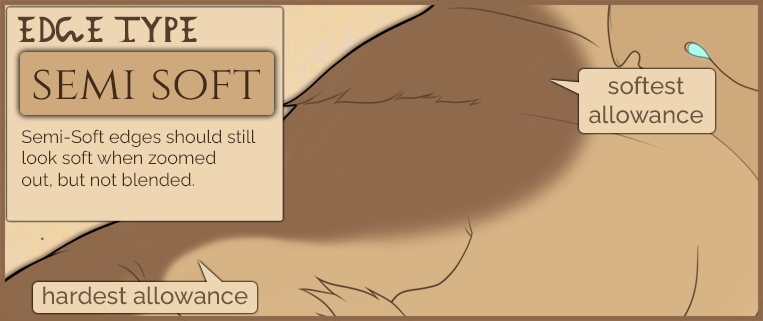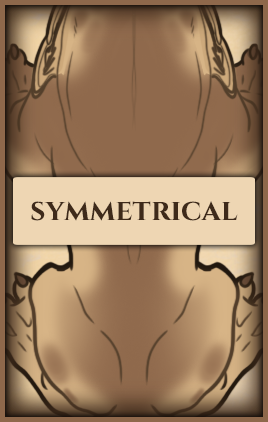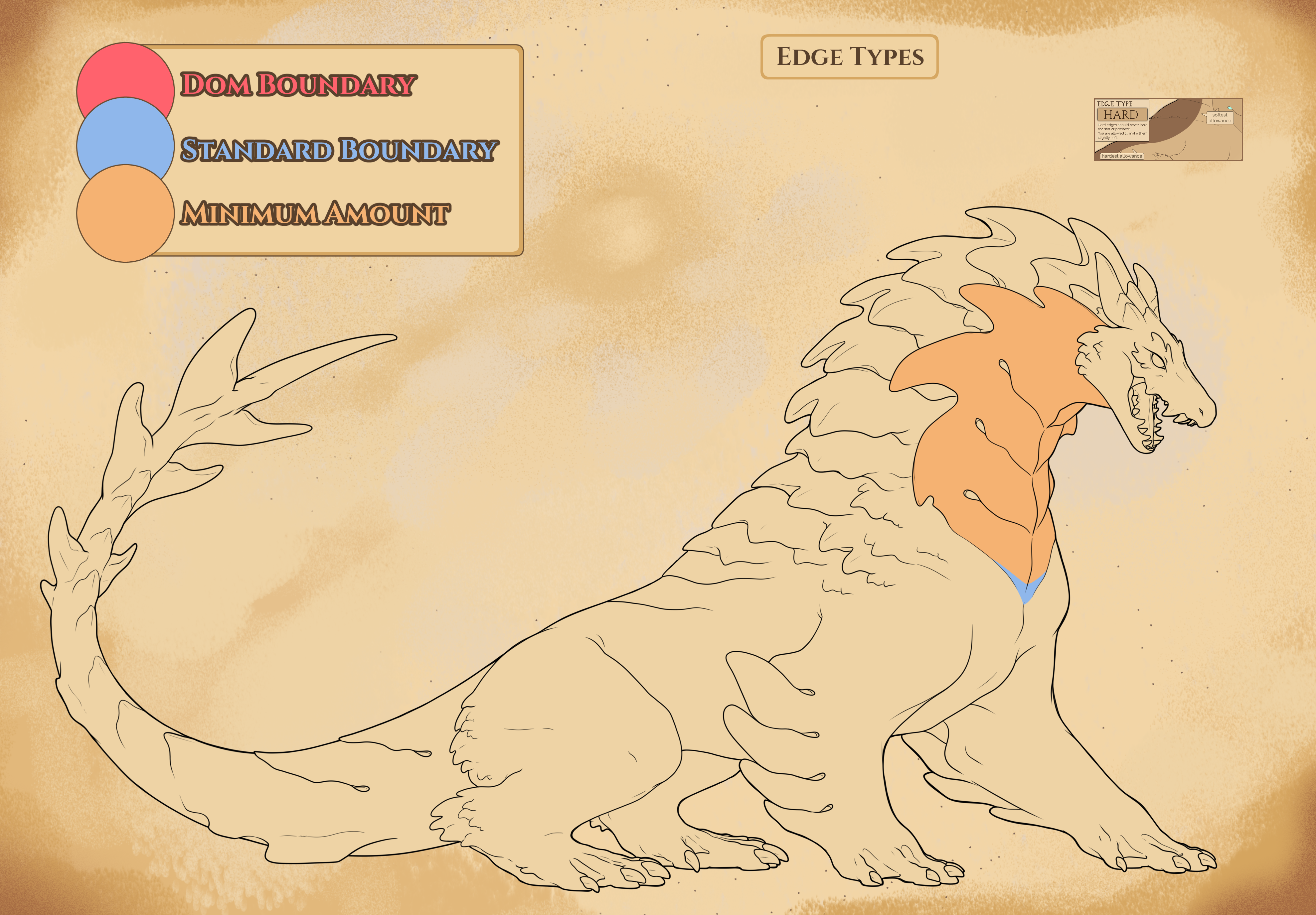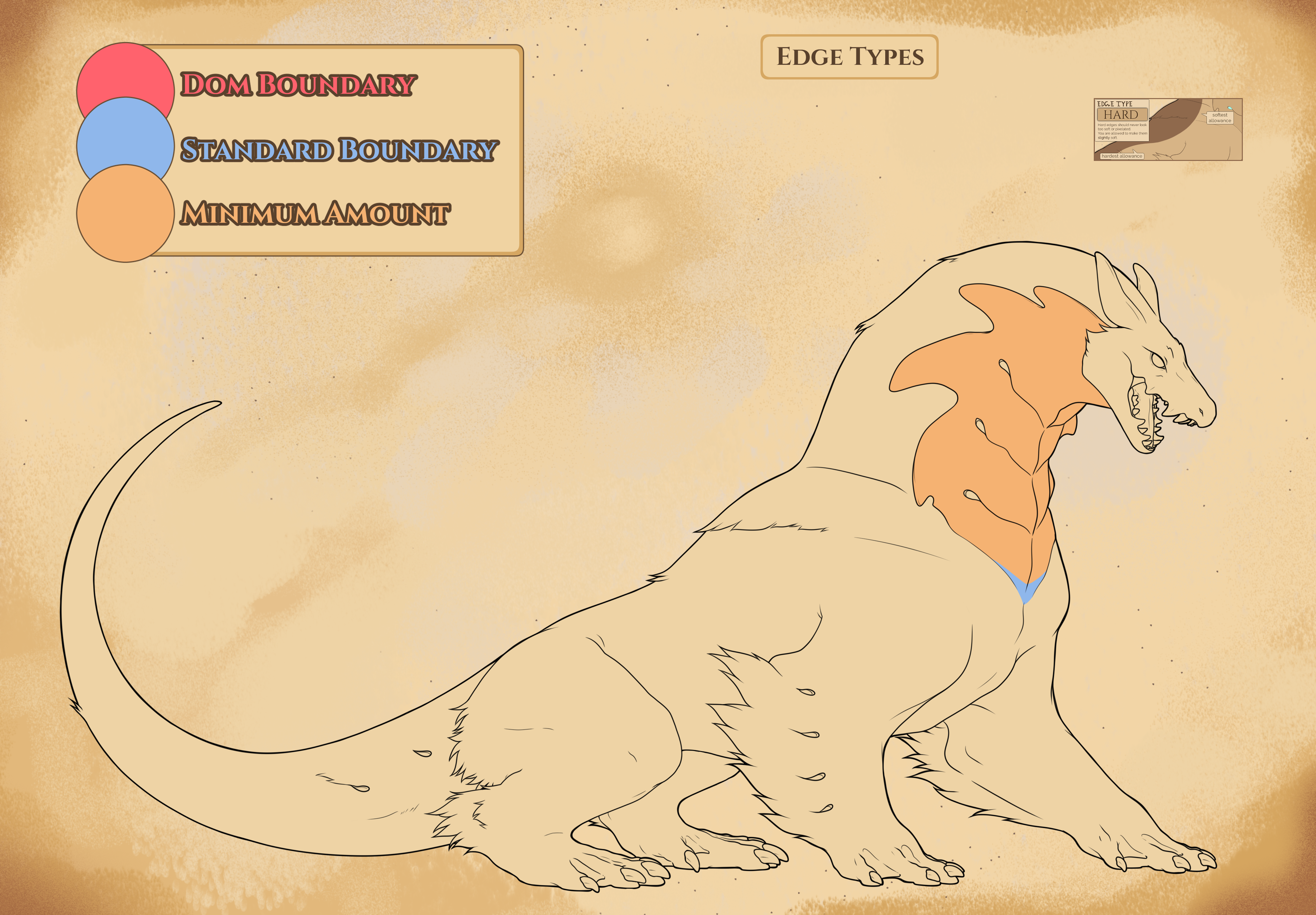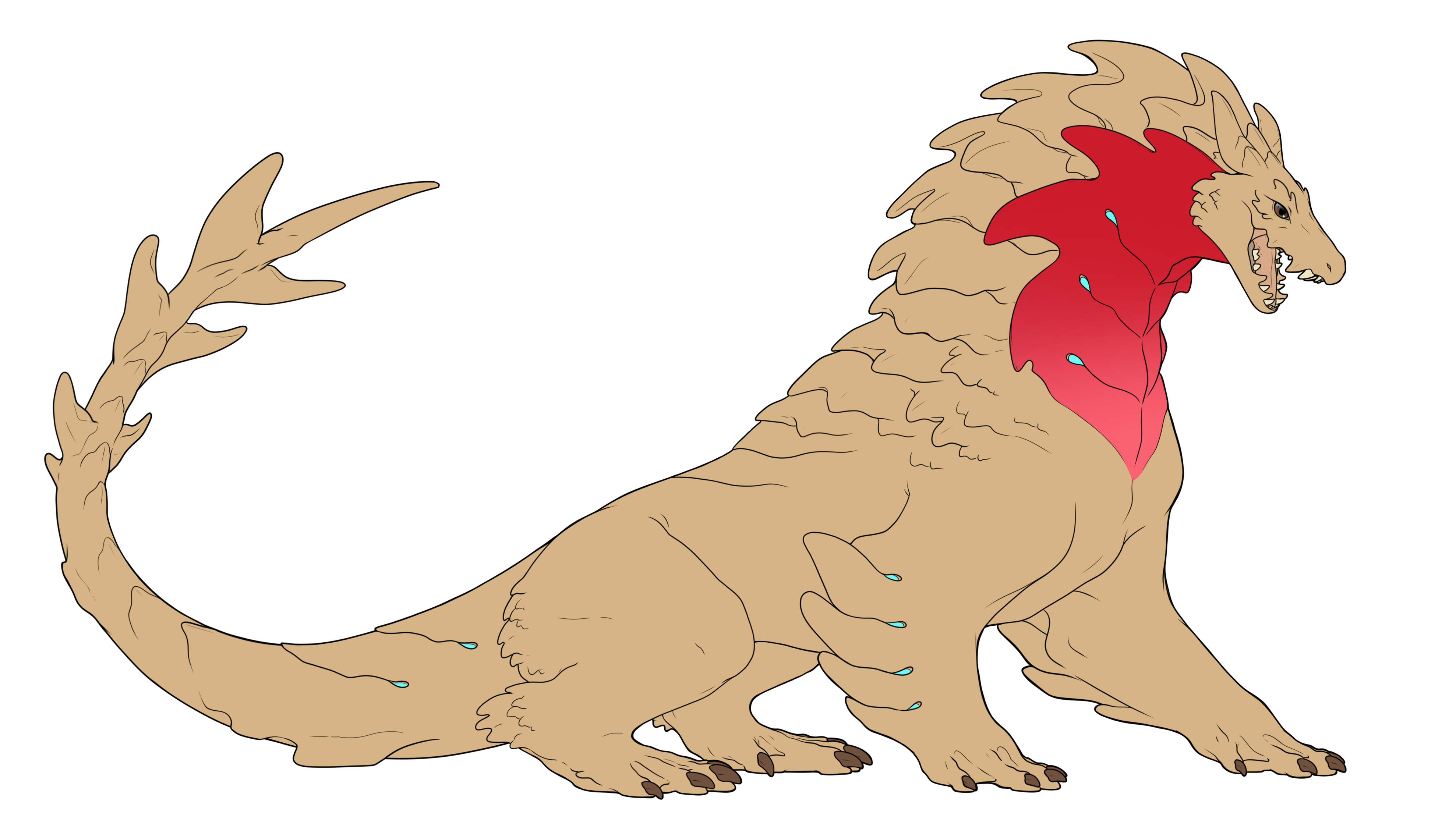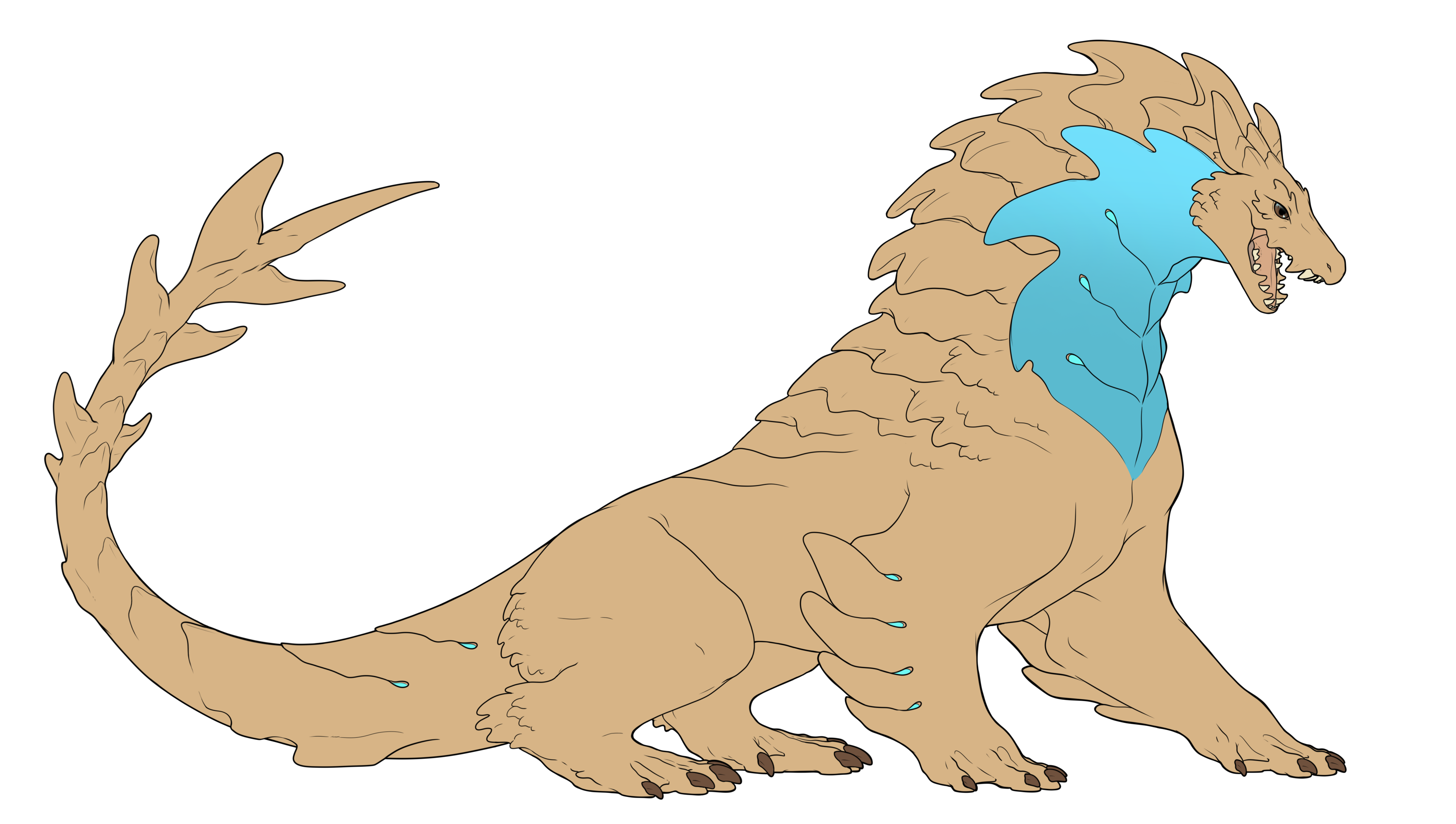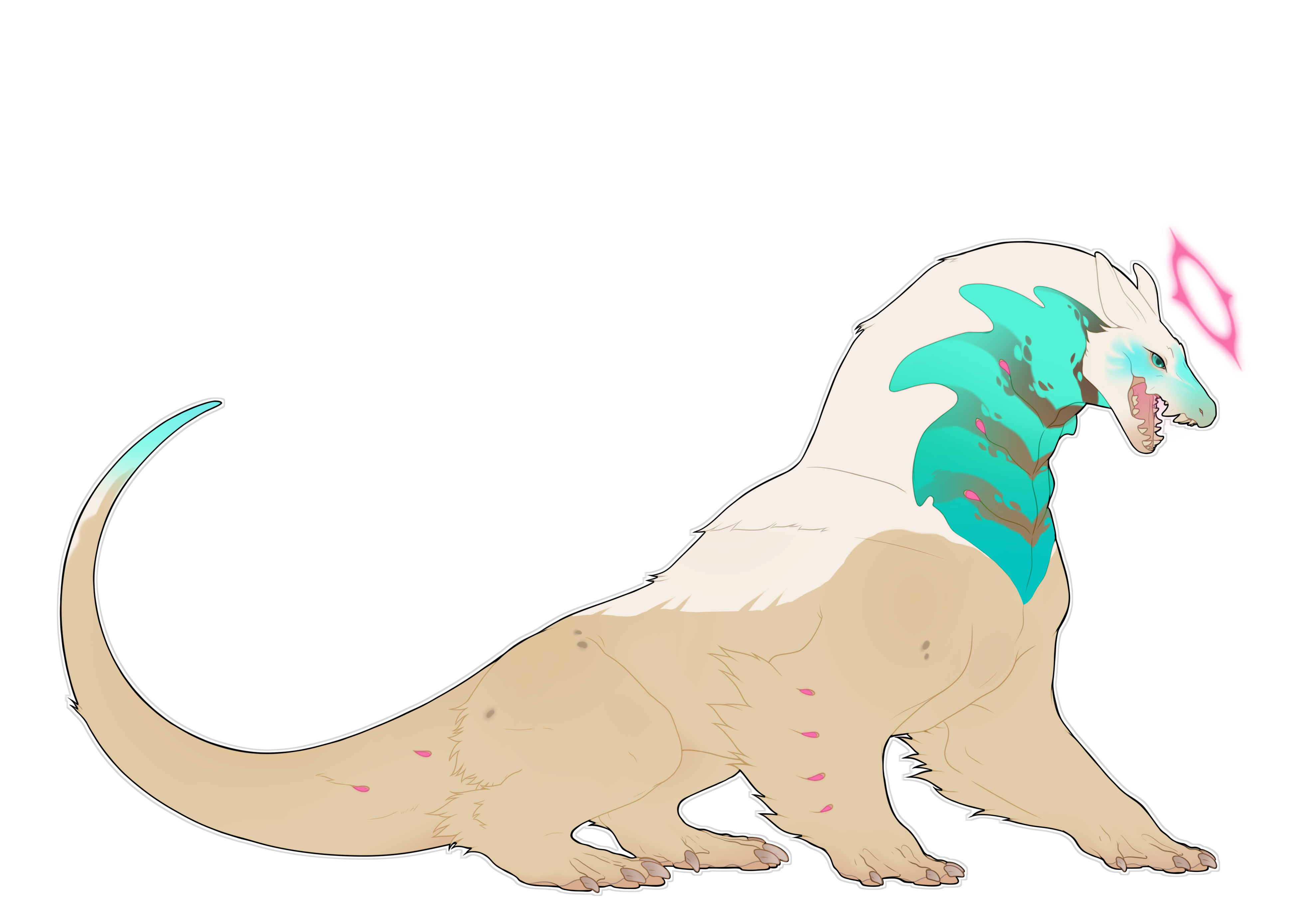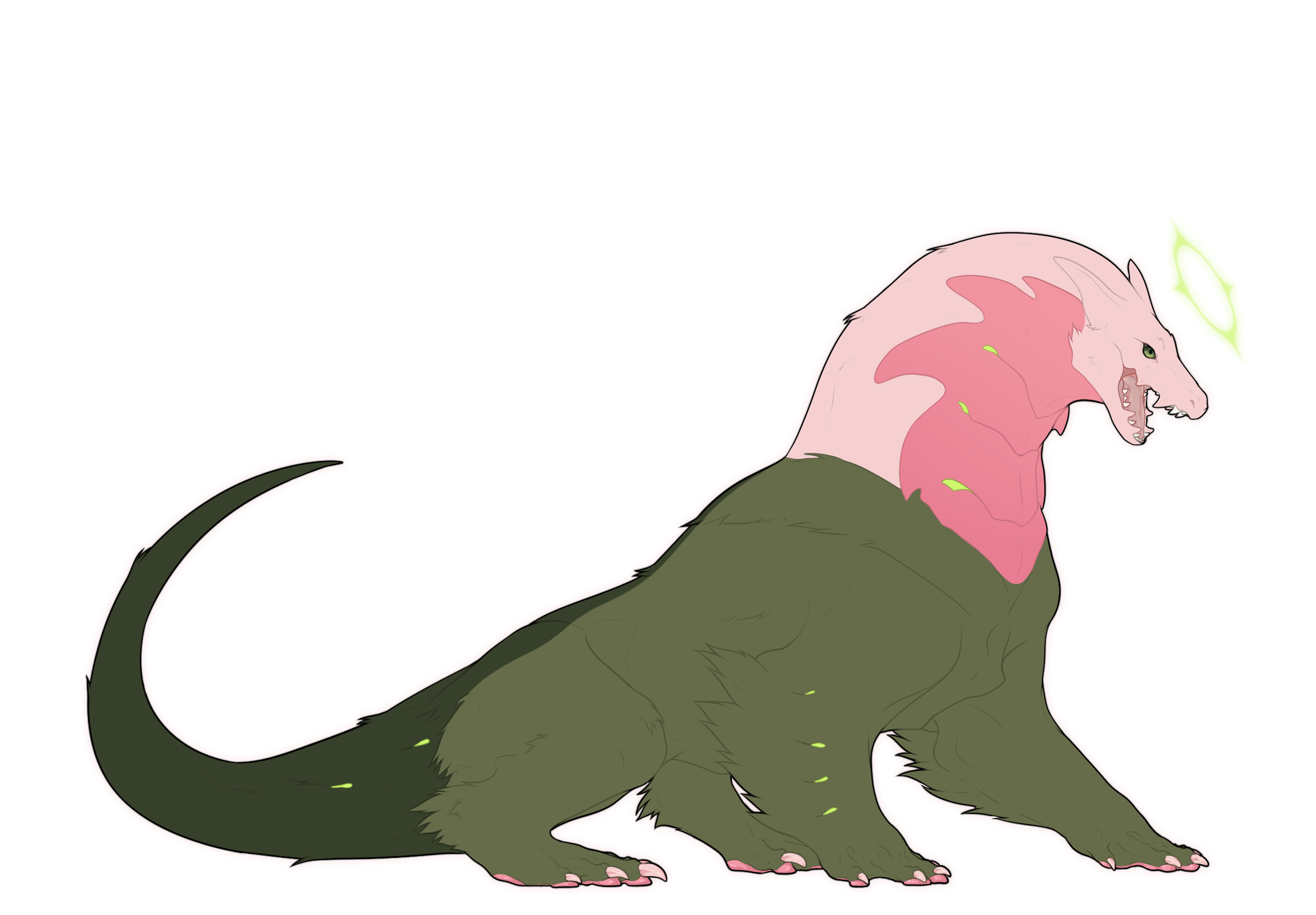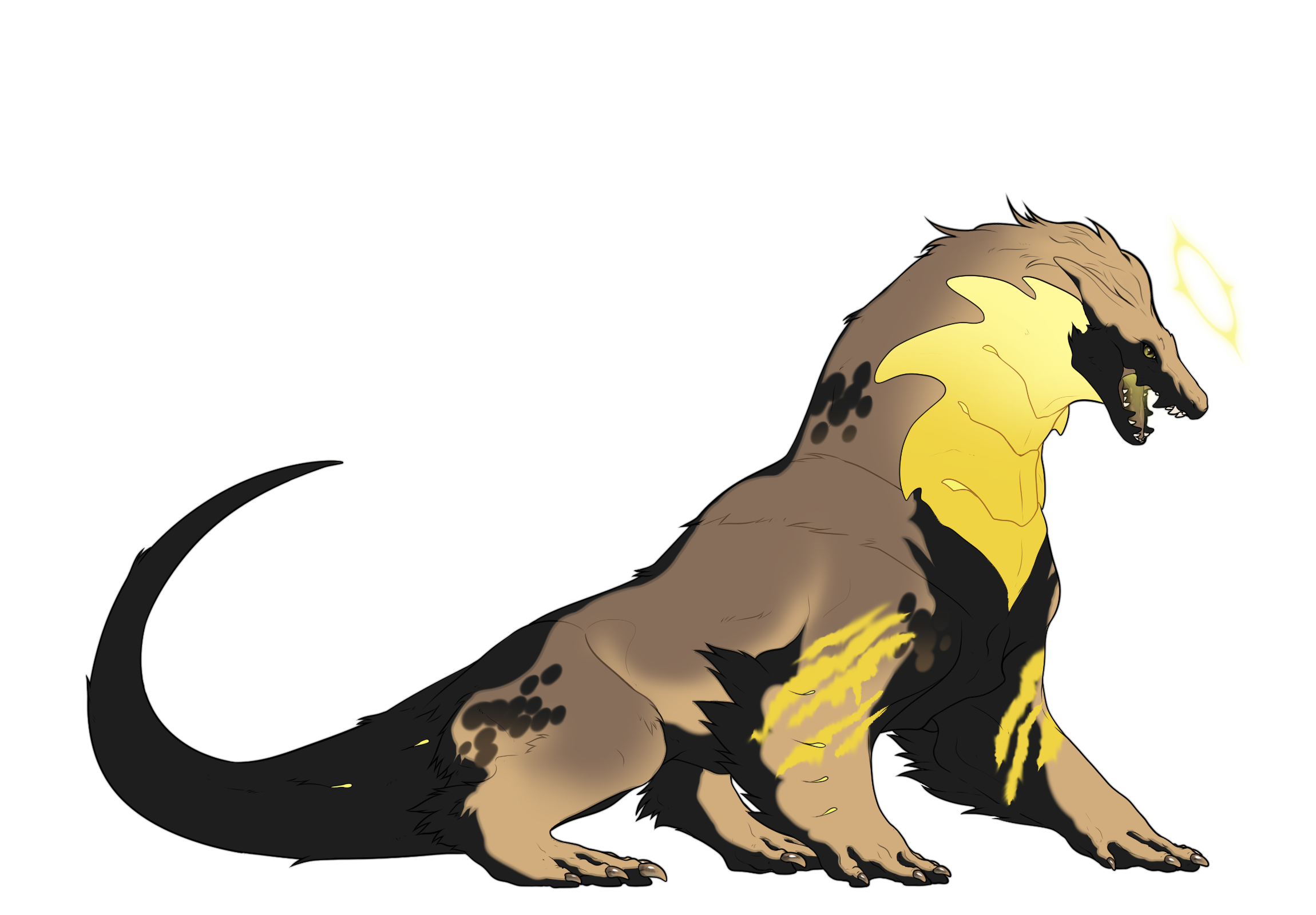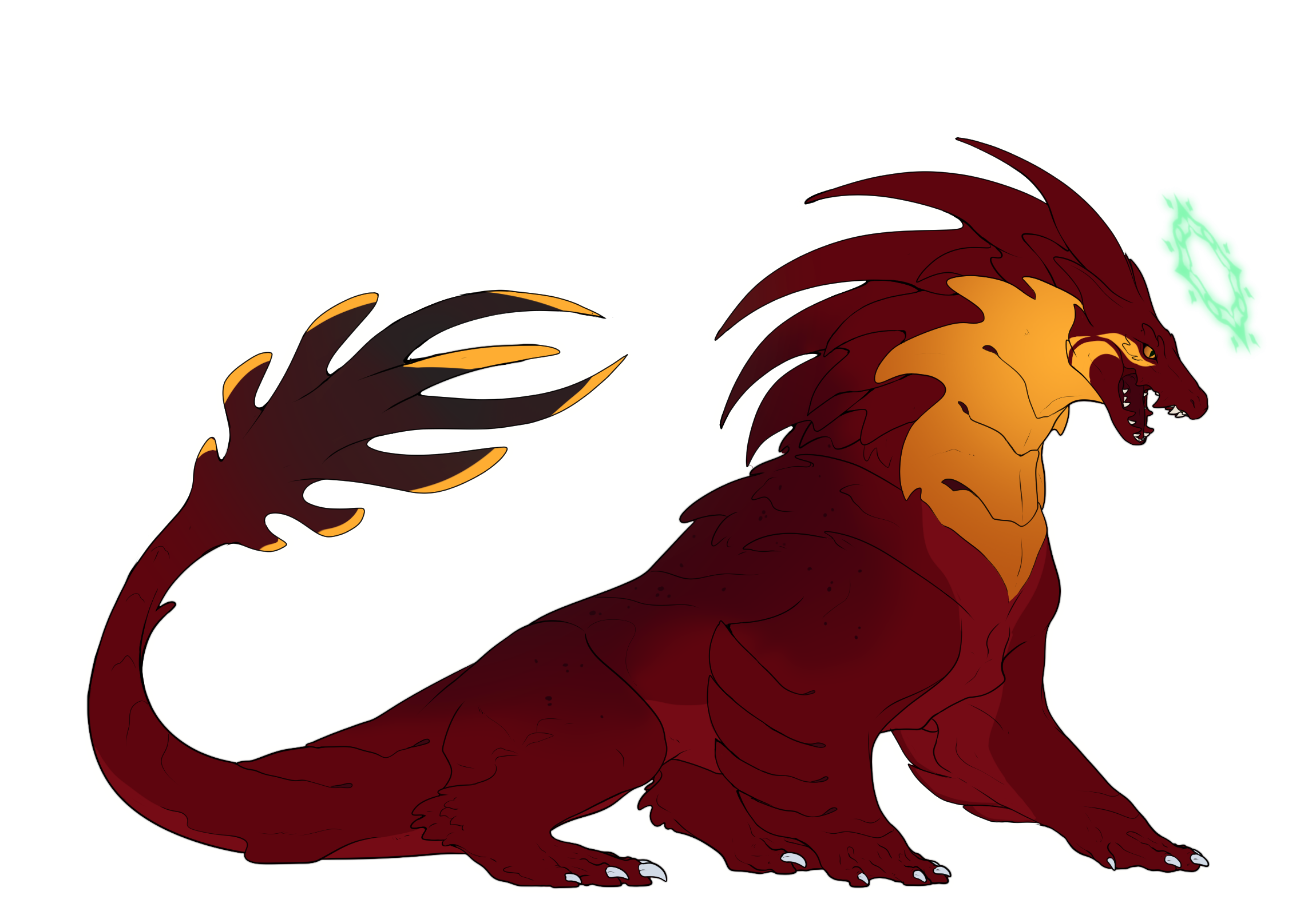Coating
CT/ct
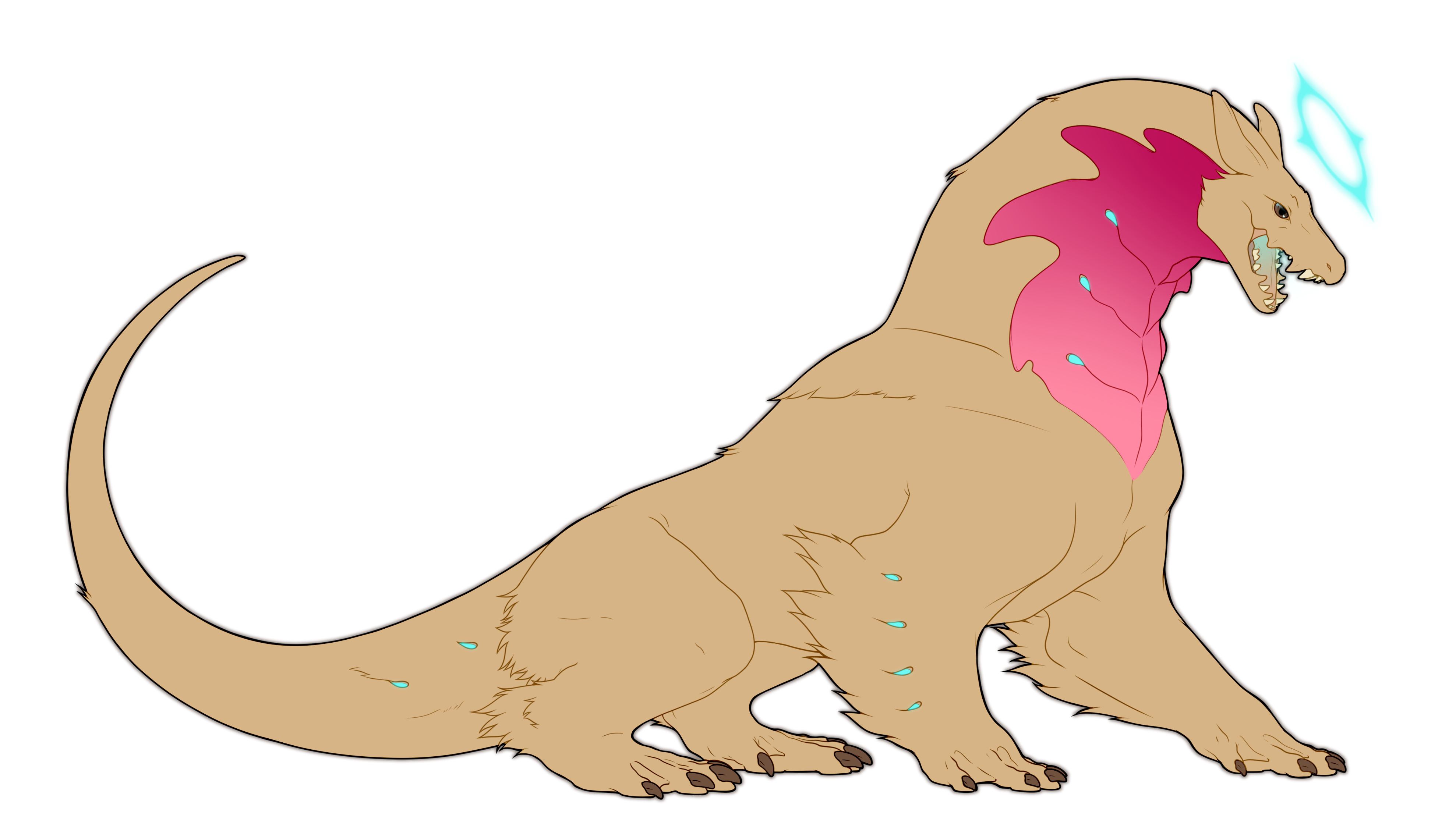
Overview
Neck armors with coating are quite the eyecatchers! Some like to show it off with pride, while others aren't too fond of the attention this marking draws. Believe it or not, there are speciality accessories designed to hide your neck armor!
|
Marking Rarity
|
Marking Layering |
Marking Colors
|
Marking Edges |
Symmetry Rules |
 Rules
Rules
|
 Boundaries
Boundaries
Copy paste these images directly into your art program over your design and set them to multiply for the best work effect.
Alternatively you can download the boundary PSDs with the marking boundaries!
Armored
|
Furred
|
Coating consists of two layers. A bottom layer, that covers the entire throat and gradients from one color to another, and a second optional top layer of horizontal stripes.
When designing the bottom layer, you must color-pick from the arcane section of the specified basecoat slider. The gradient runs from head to chest (vertically) and it should be clear at-a-glance that there is a gradient present. You have the freedom to choose if the gradient flows light to dark or dark to light.
When designing the optional top layer, you must use either the somber section of your basecoat slider, or a color from the black slider. Stripes should run horizontally and may showcase a gradient from light to dark. Additionally, they can fade into the bottom layer as they extend outwards from the center. You may have one to five stripes.
| Without stripes | With stripes |
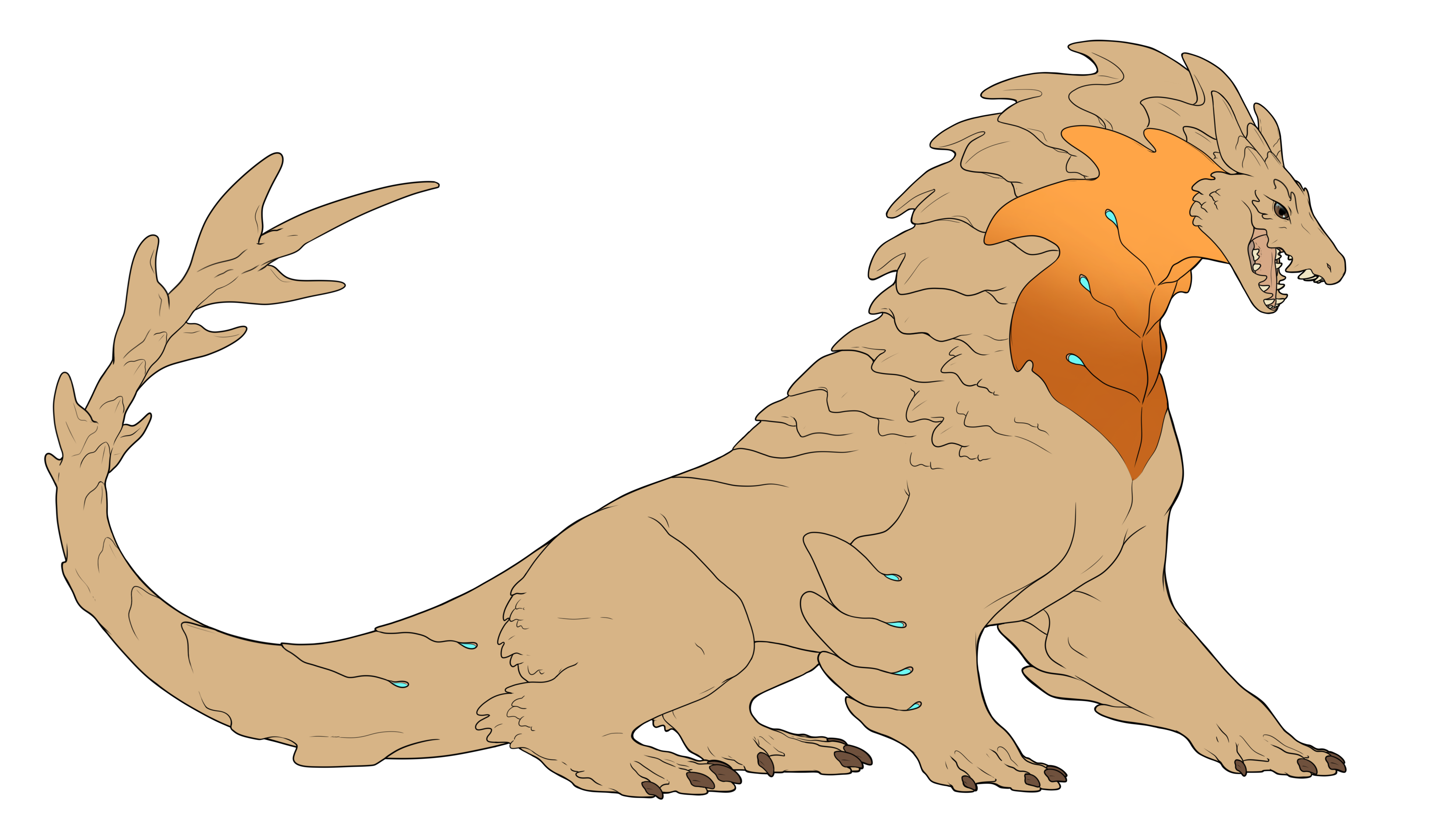 |
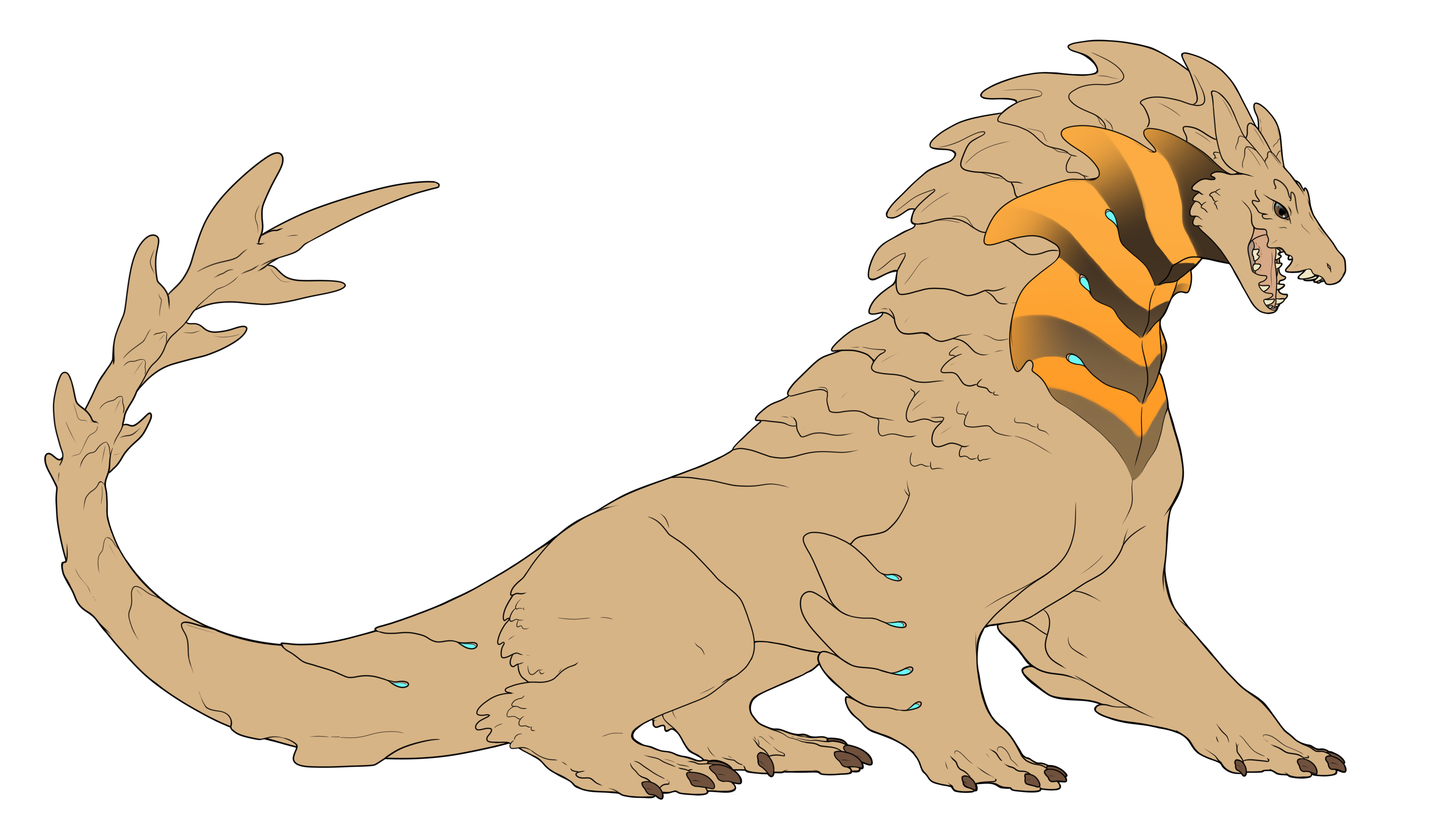 |
Base Layer Gradient
| The gradient must run from head to chest... | ... or visa versa. | The gradient can be slightly shaped to the contours of the neck. | The gradient can be short provided it remains blended enough. |
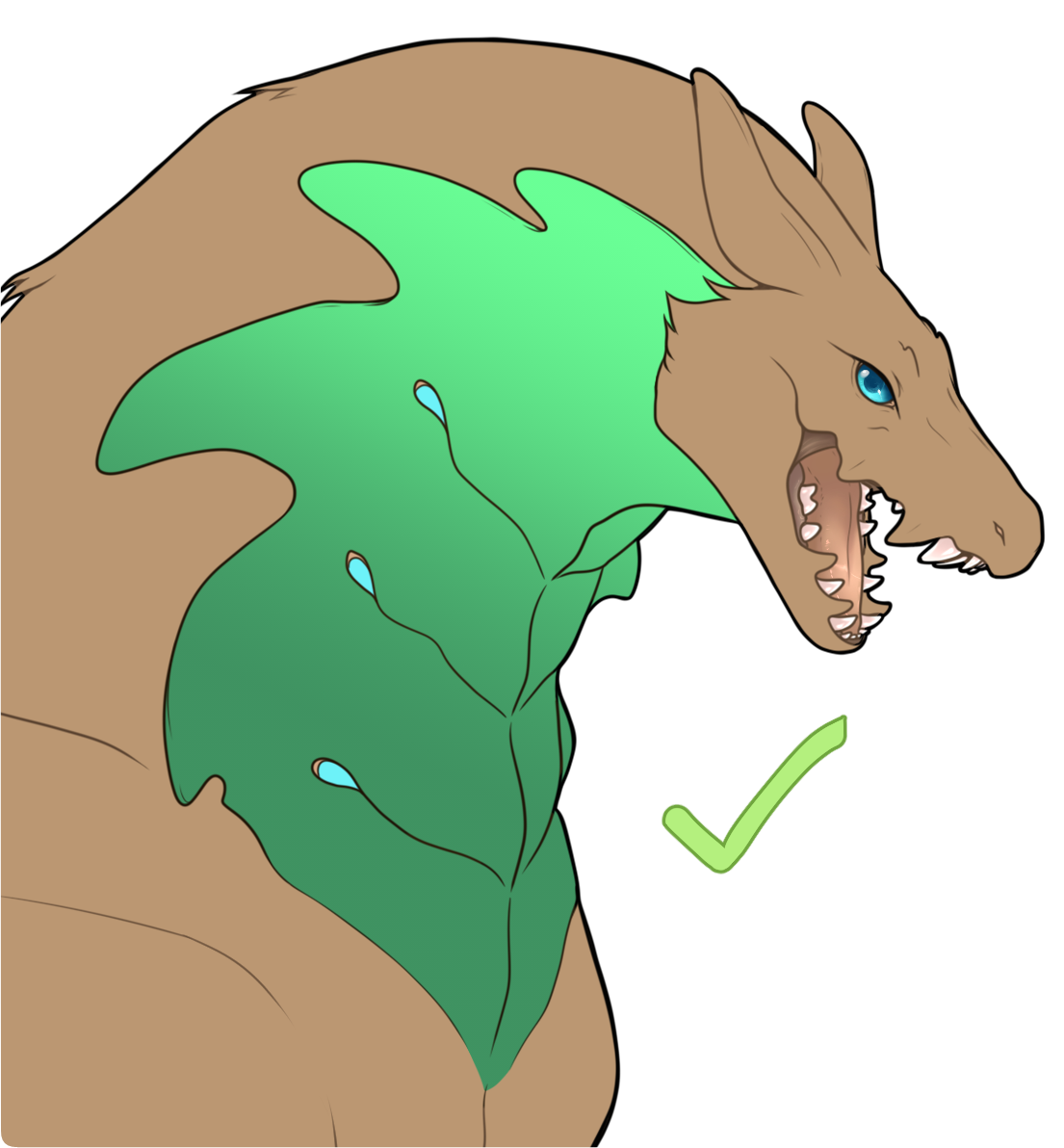 |
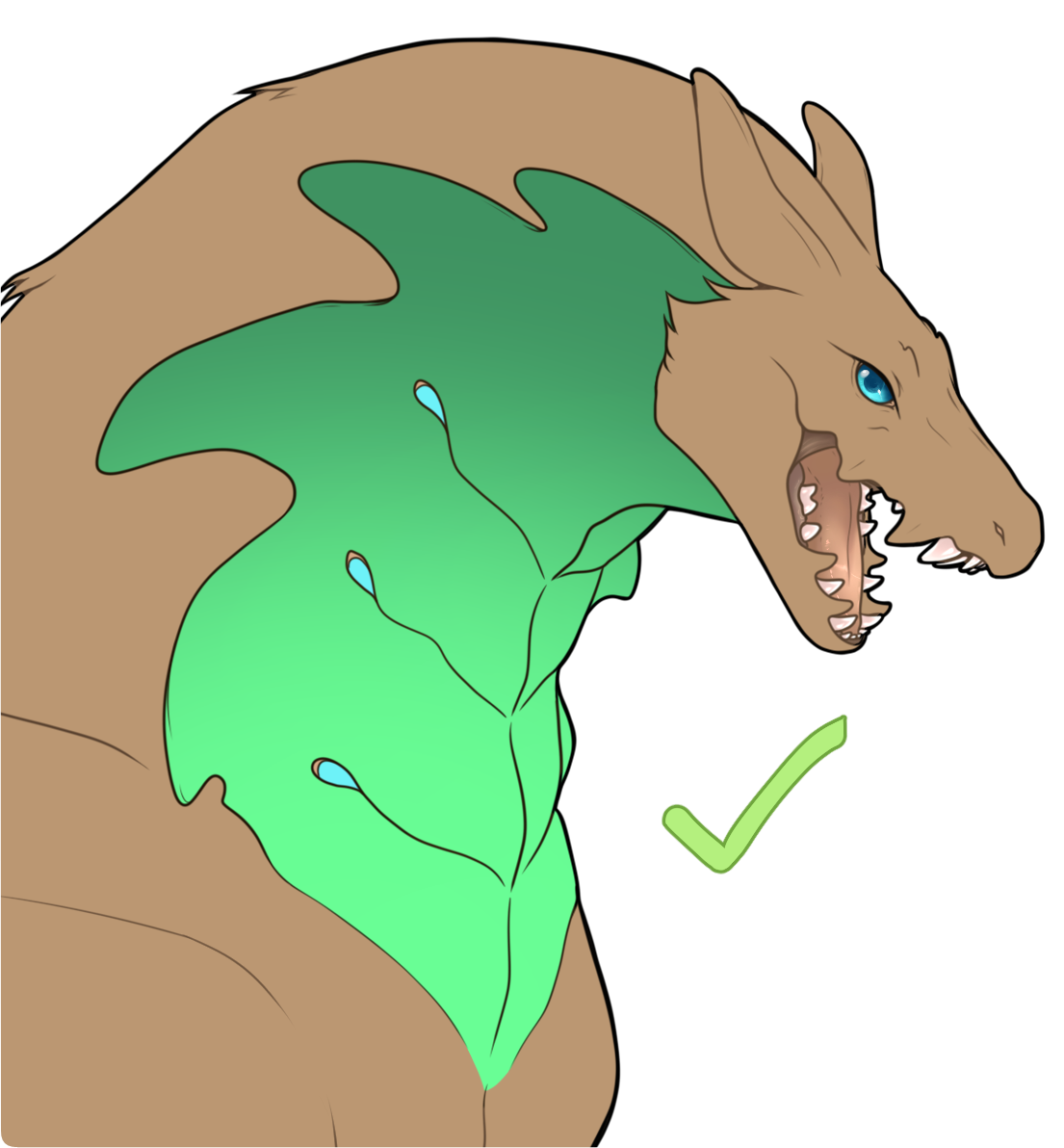 |
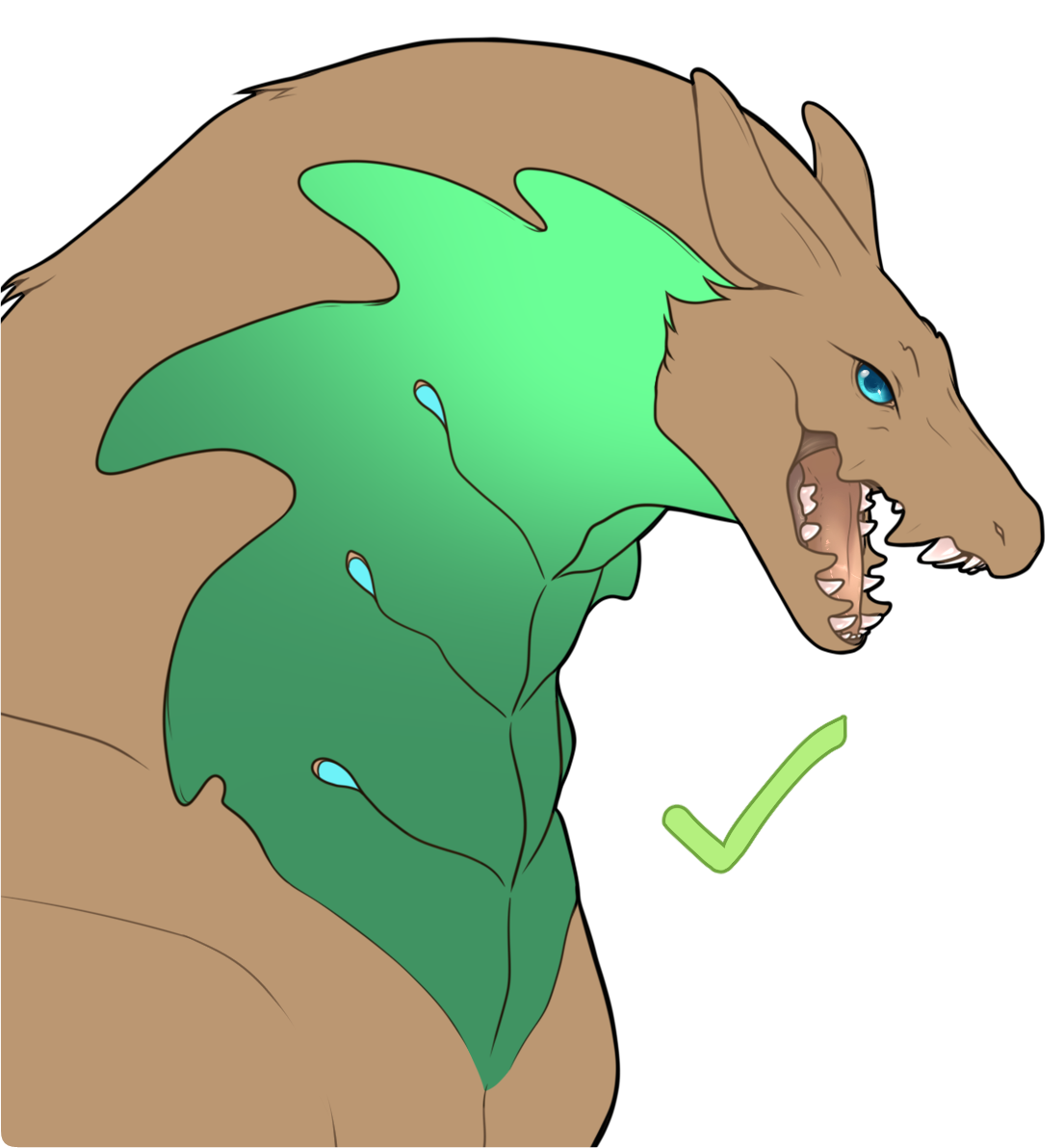 |
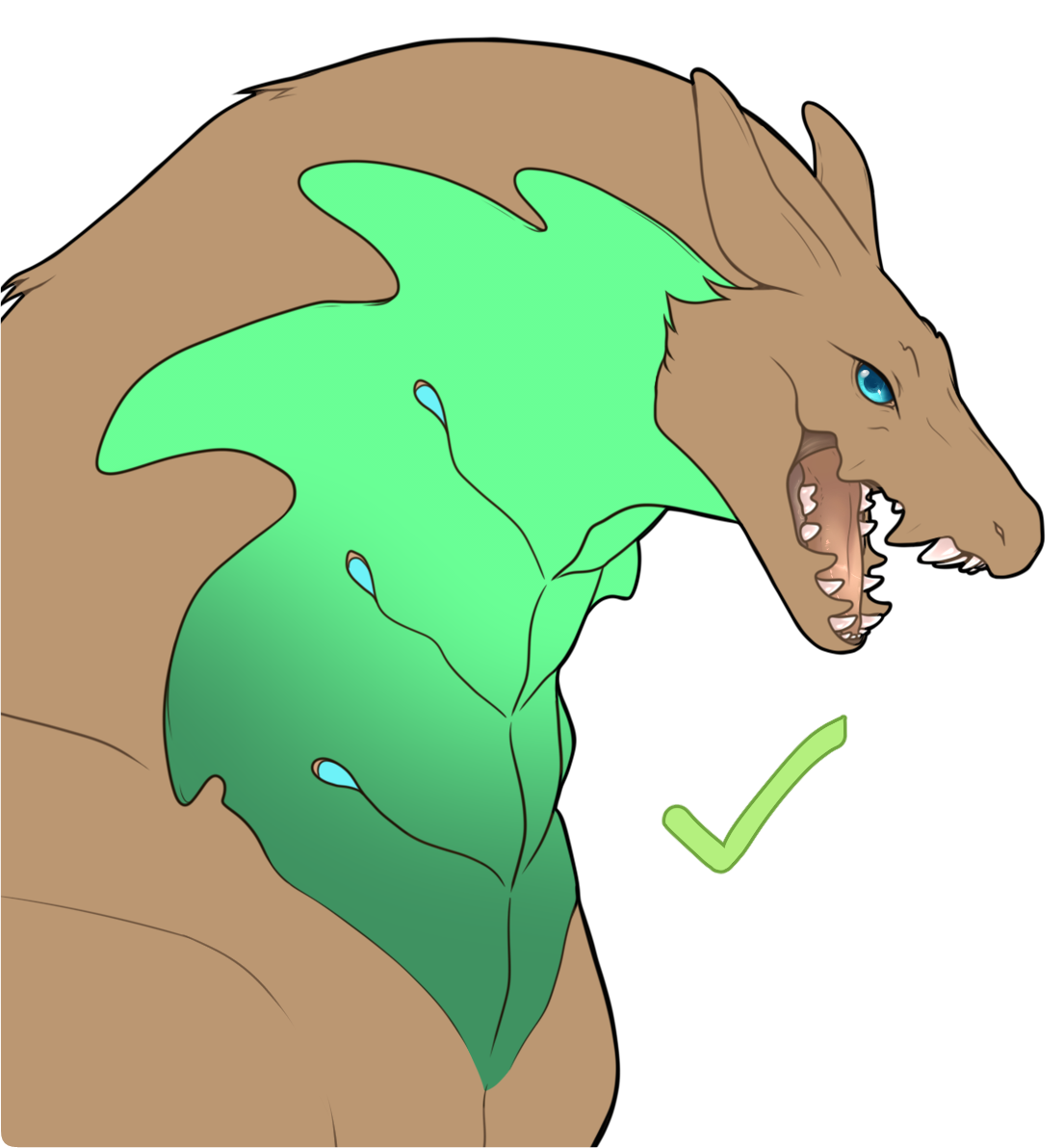 |
| Coating must cover the entire throat armor. | The gradient cannot use more than 2 colors. | The gradient cannot be radial or horizontal. | Coating must be a smooth, blended gradient. An edge should not be visible. |
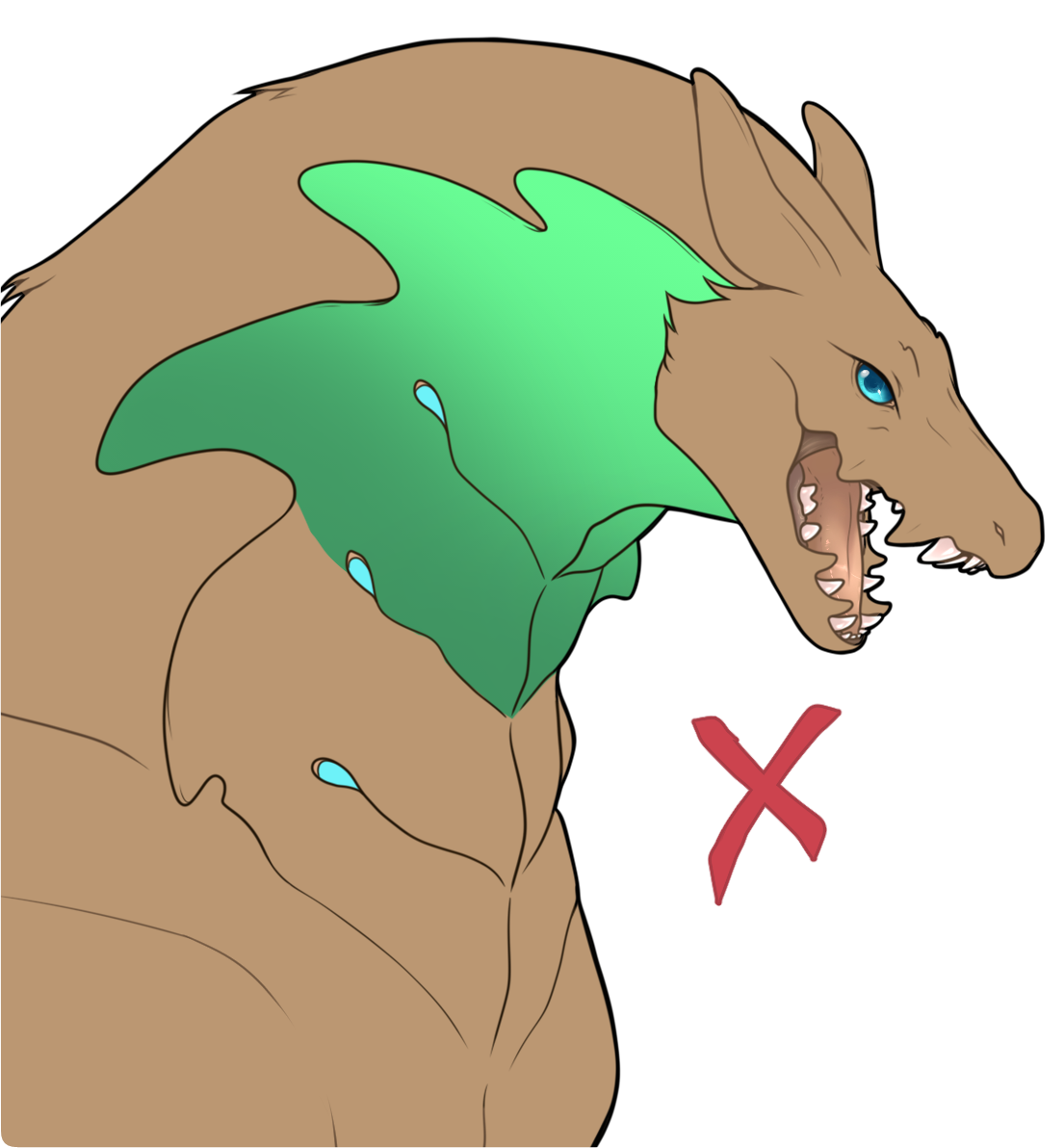 |
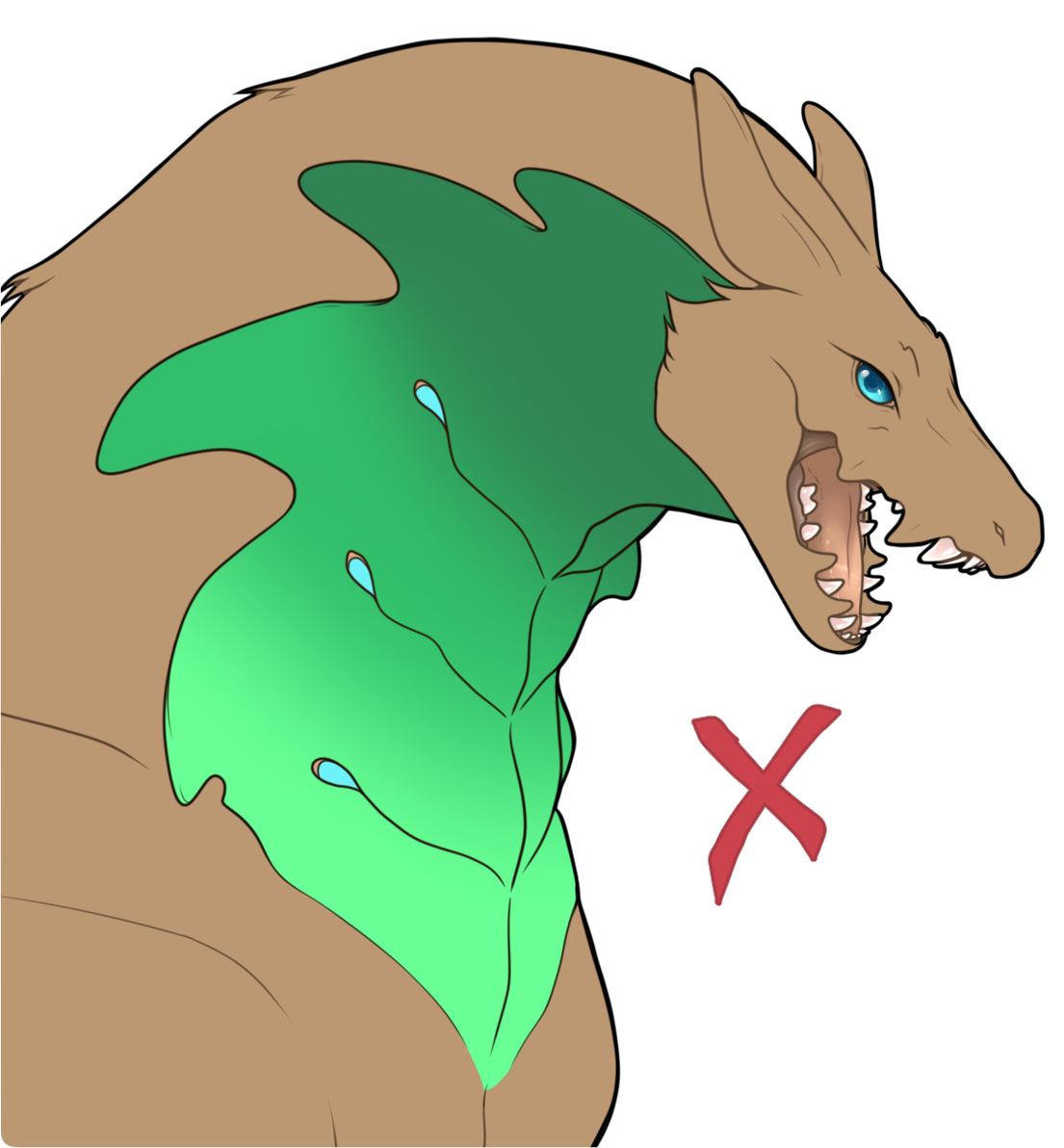 |
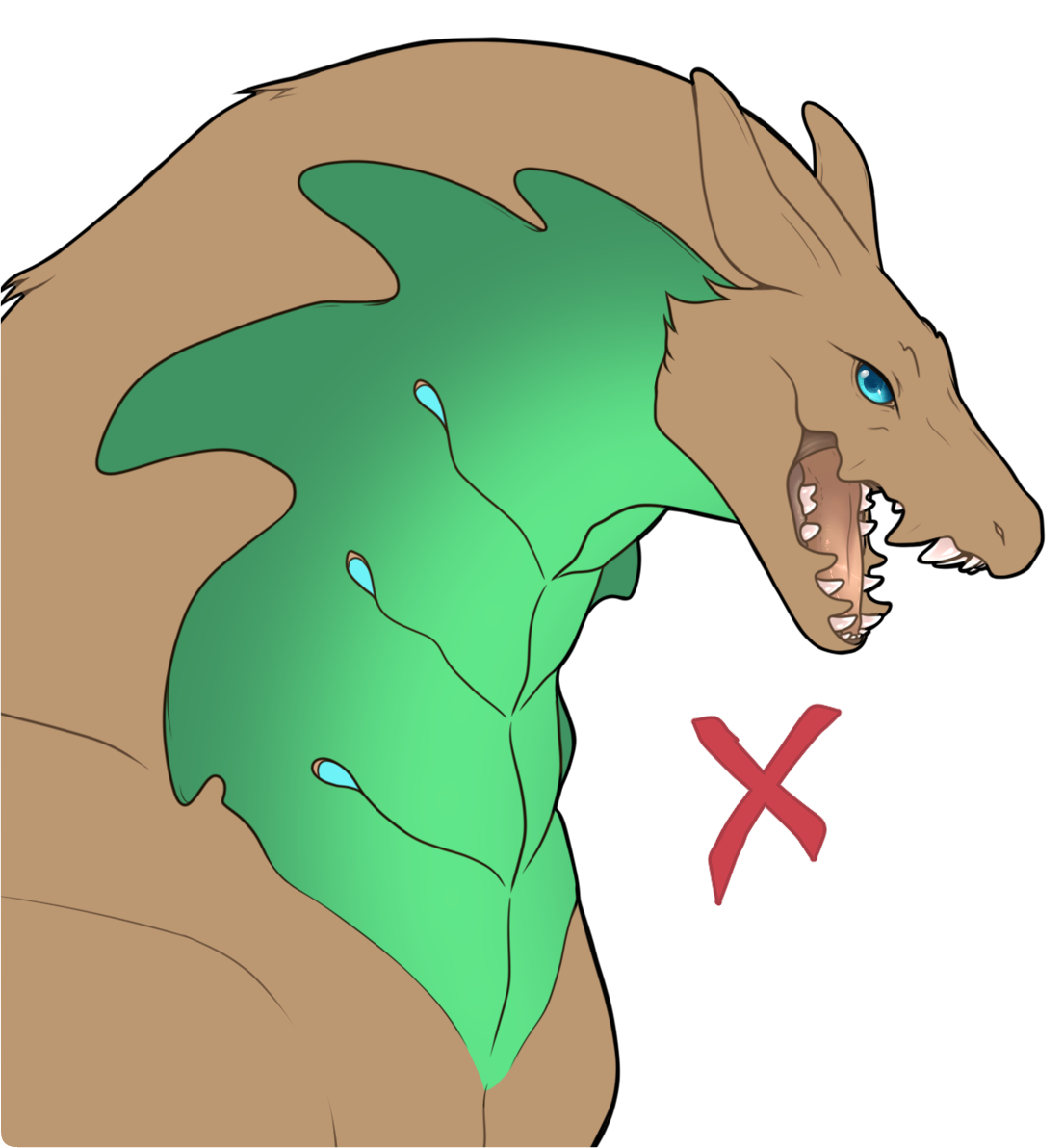 |
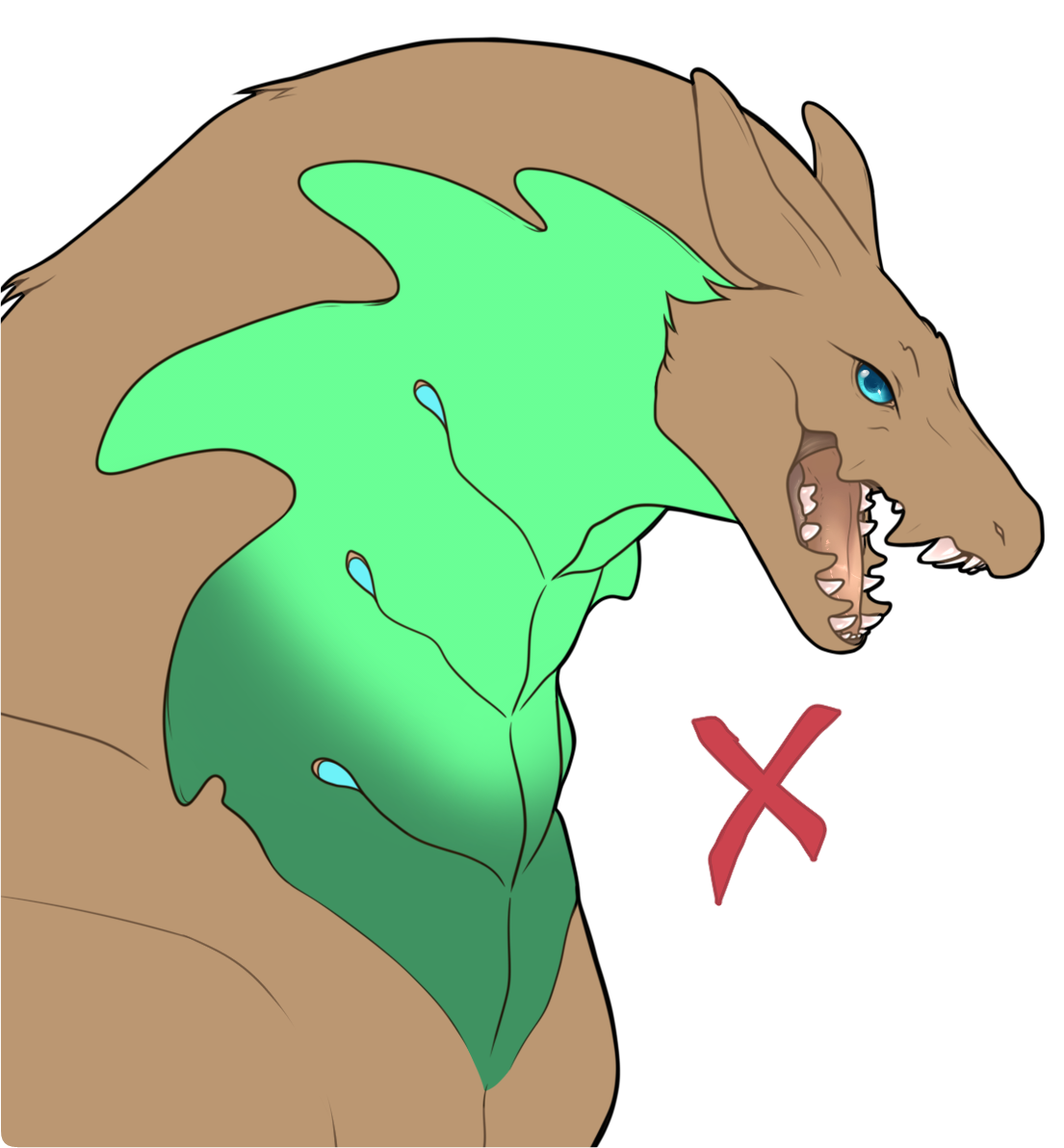 |
Stripe Max Size
| Chunky. | Chonker. | Chonkiest. | Stripe thickness should not exceed 3 neck 'segments'. |
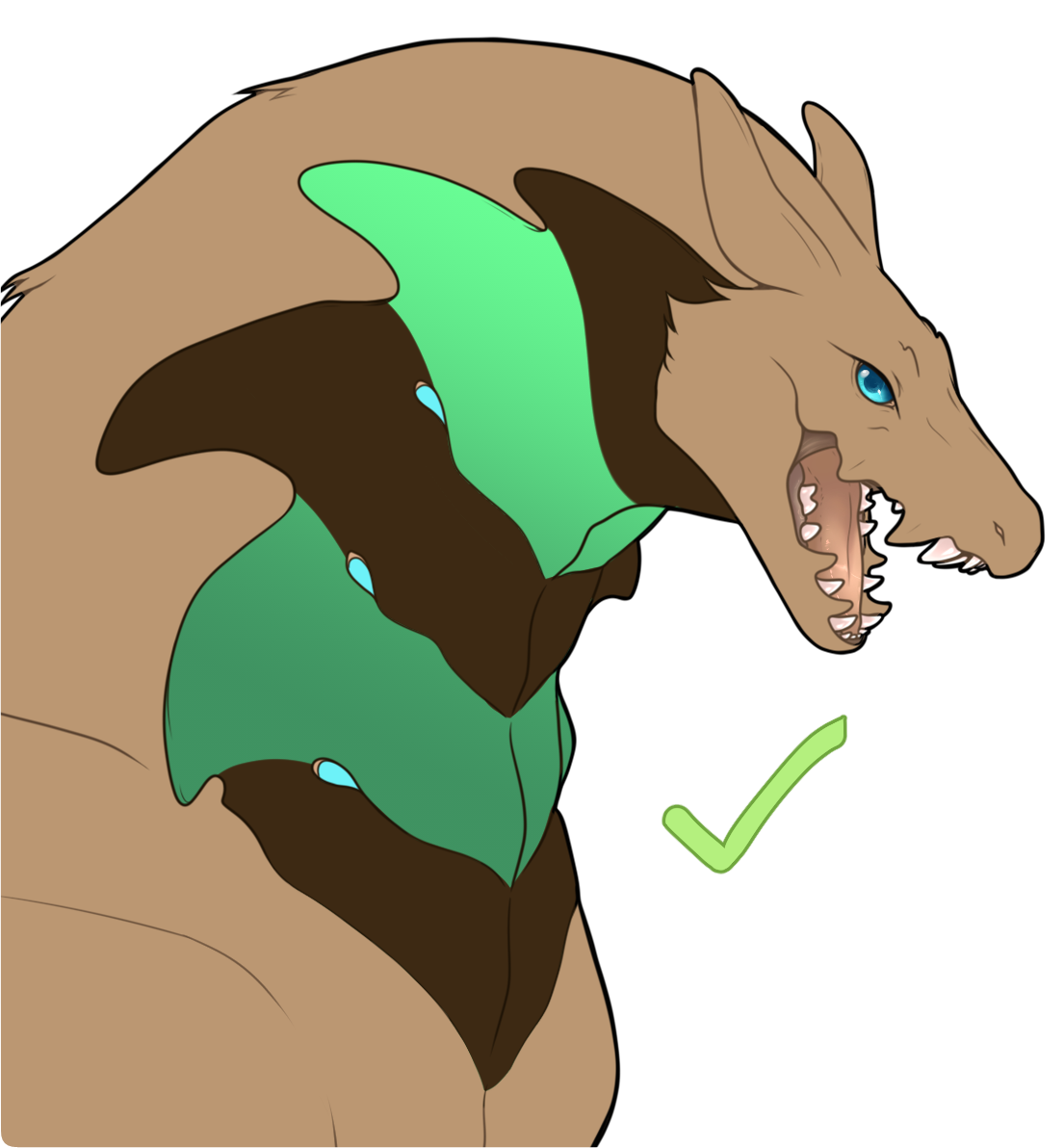 |
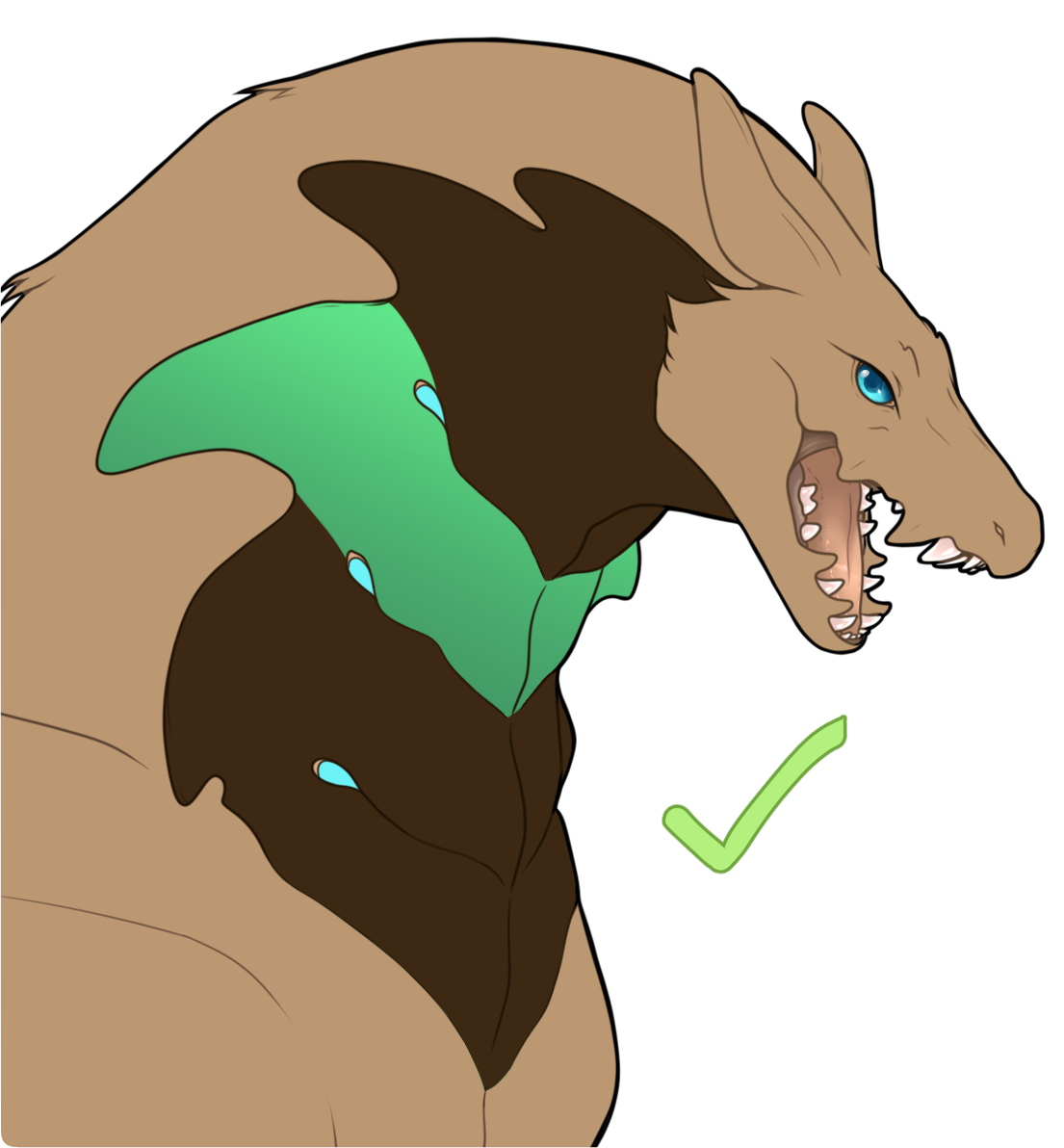 |
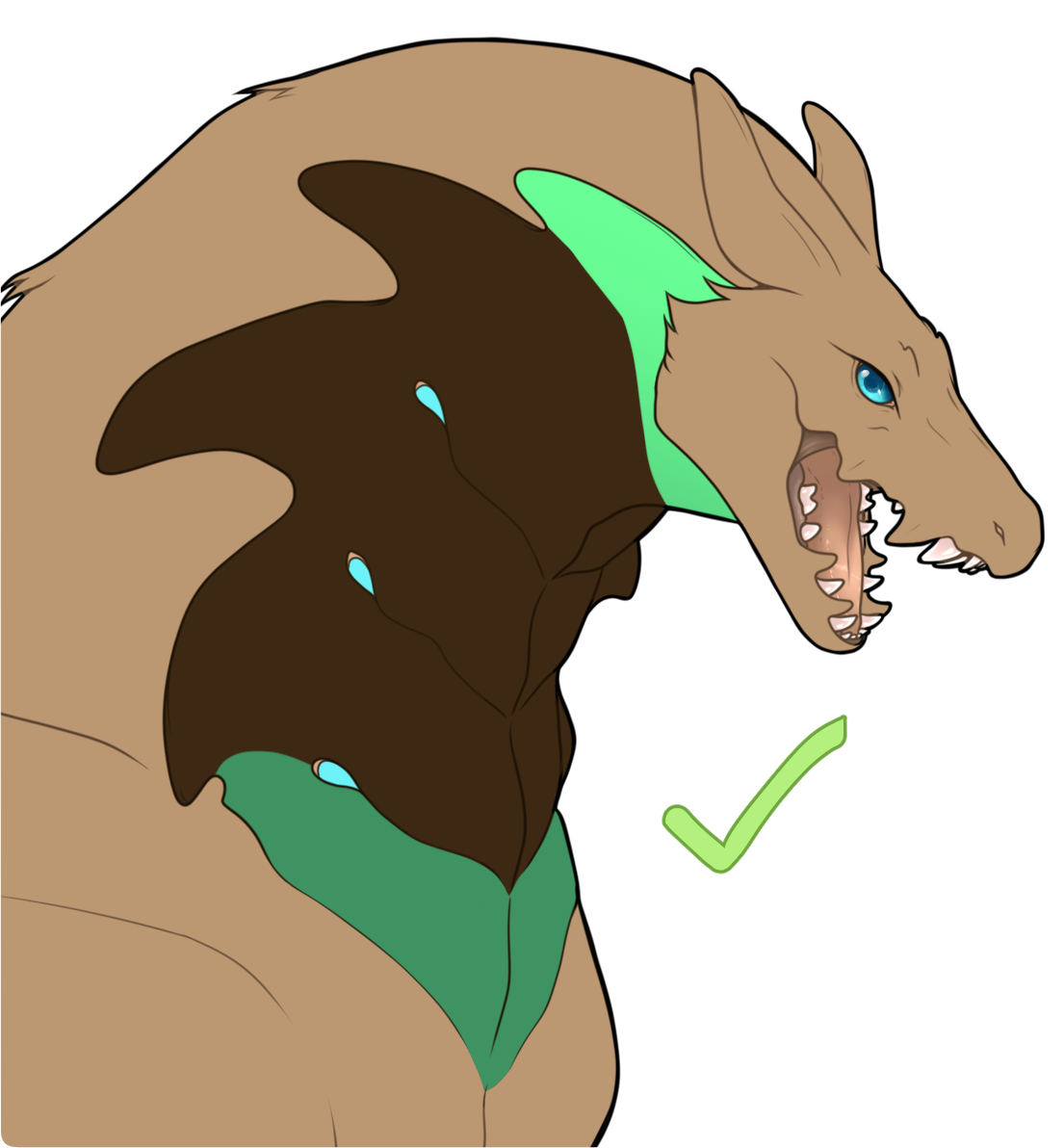 |
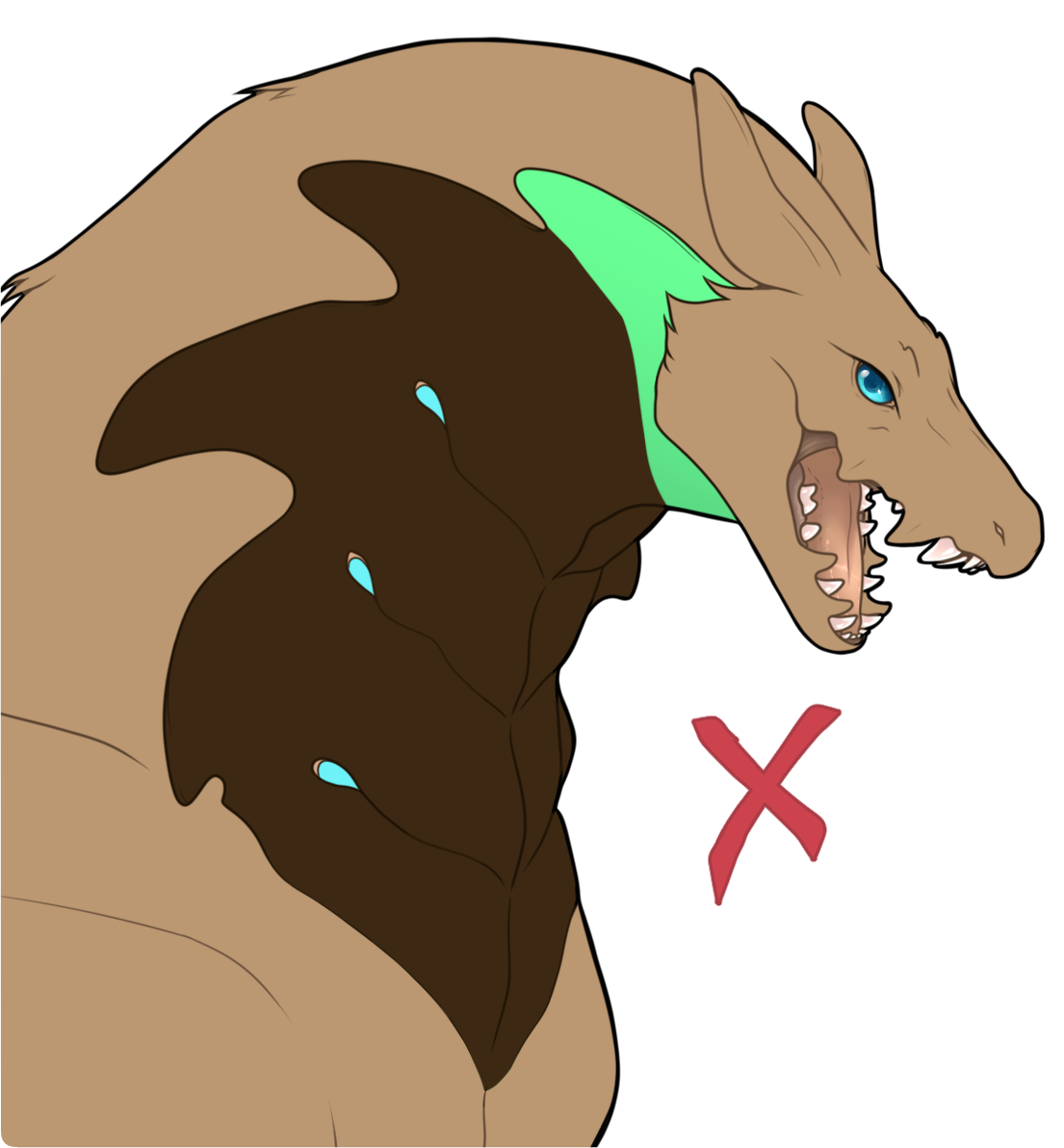 |
Stripe Shaping
| Stripes may have a horizontal gradient.. | ..or a vertical gradient.. | ..or no gradient at all! | Stripes can vary in width. |
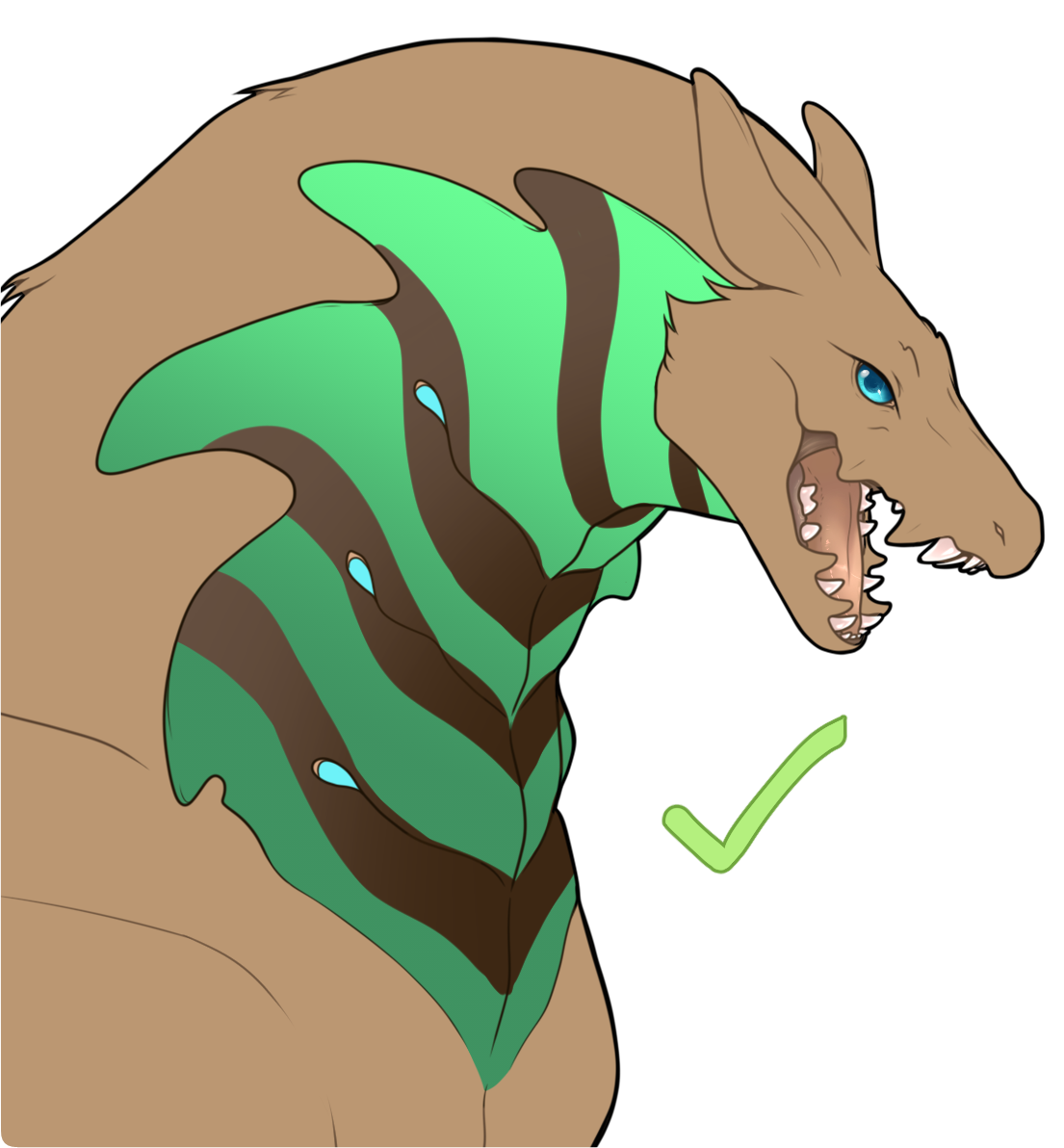 |
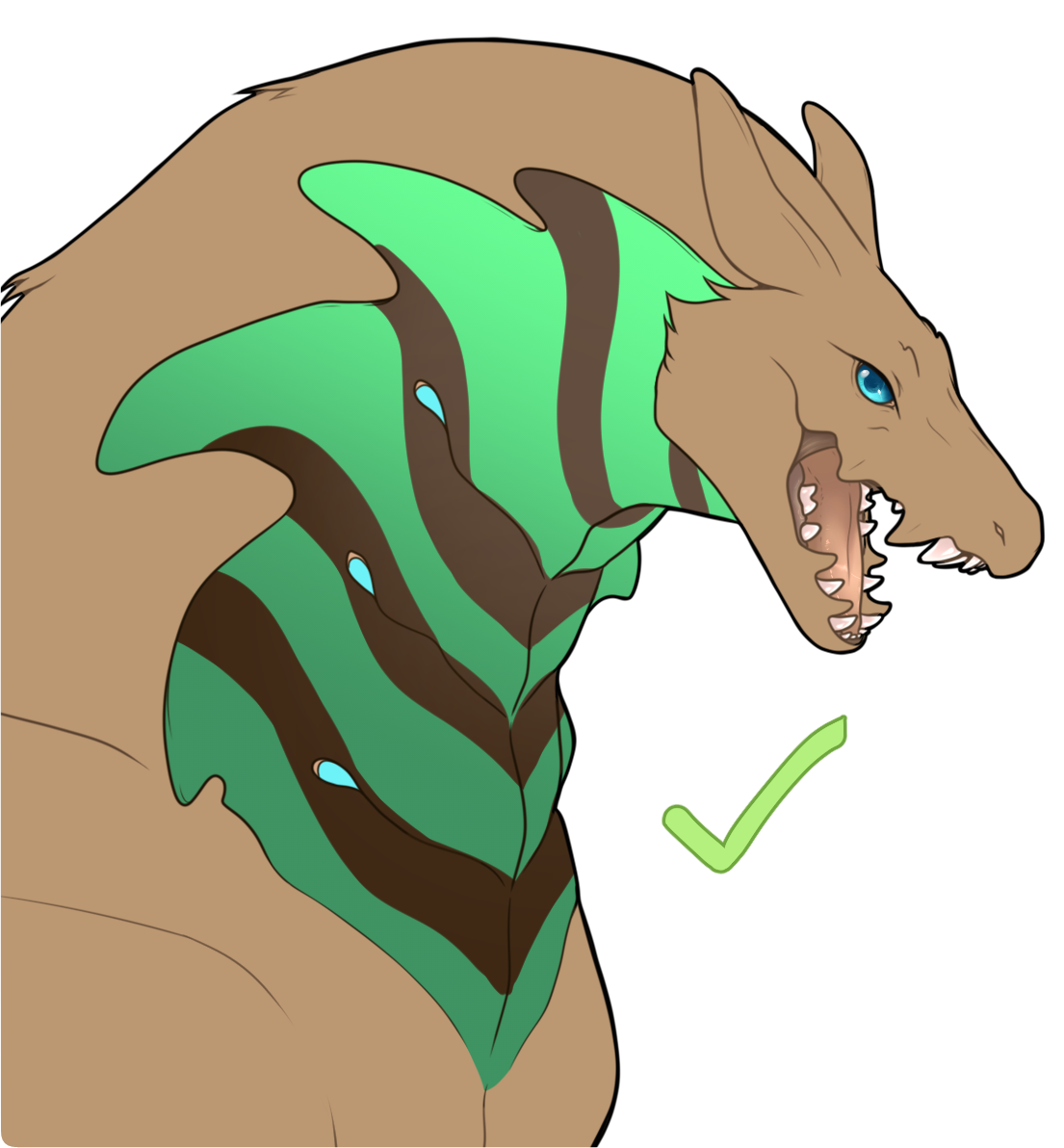 |
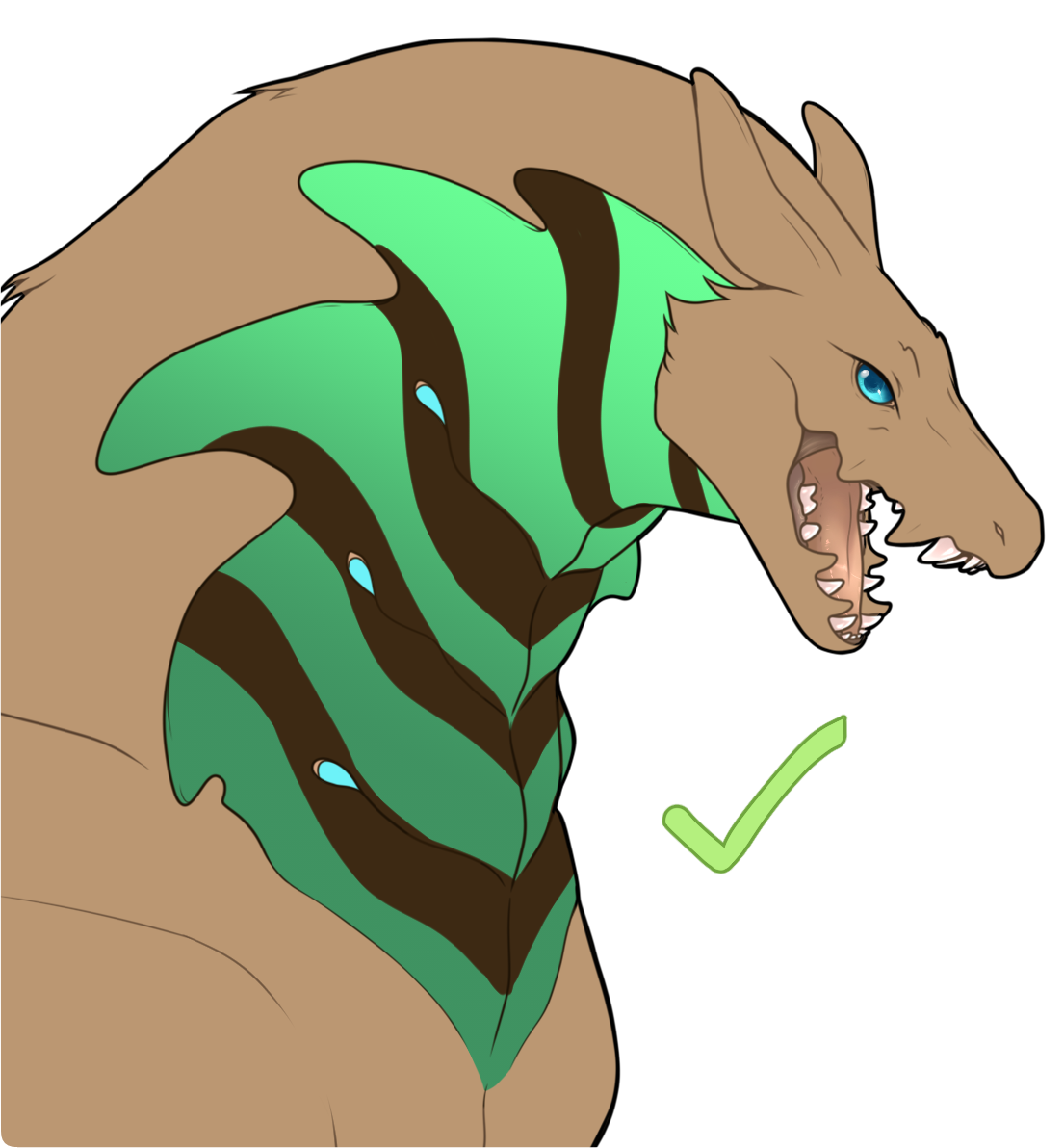 |
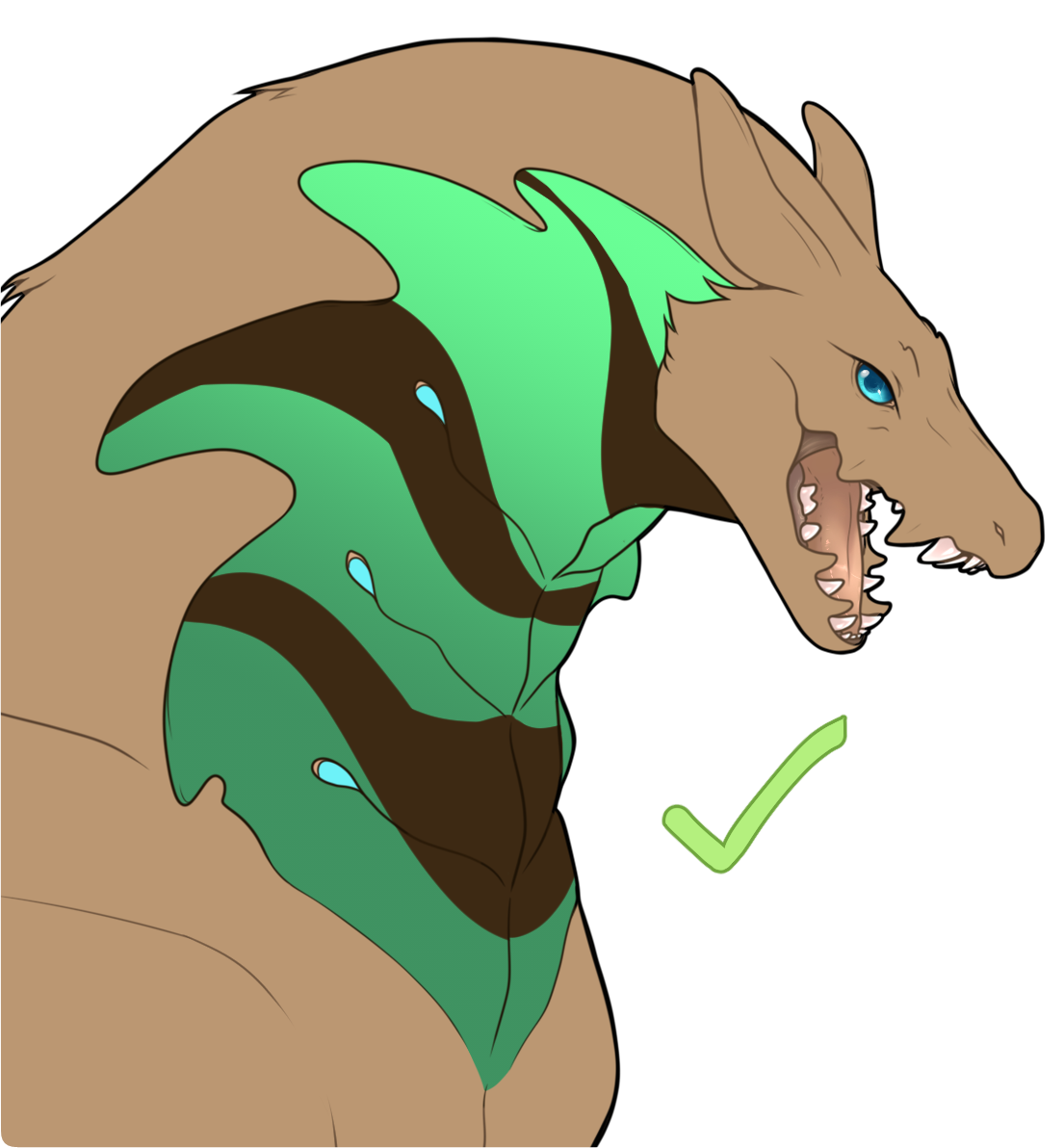 |
| Stripes can mix hard and a semi-soft edge types! | The stripes can fade as they reach the edge of the throat armor. | Stripes can use the black slider instead of your basecoat's somber slider. | Stripes cannot use the assigned color's somber slider. |
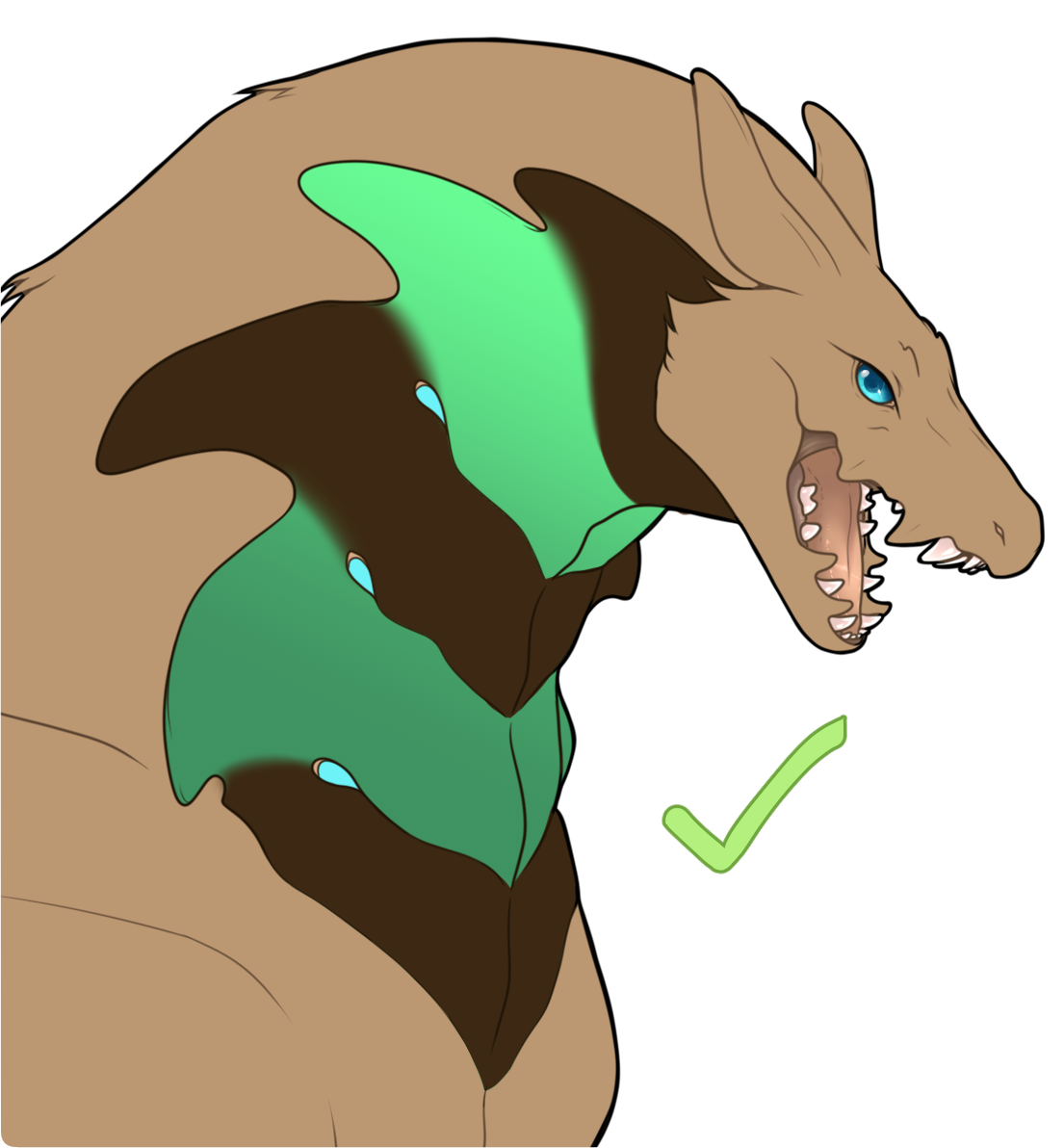 |
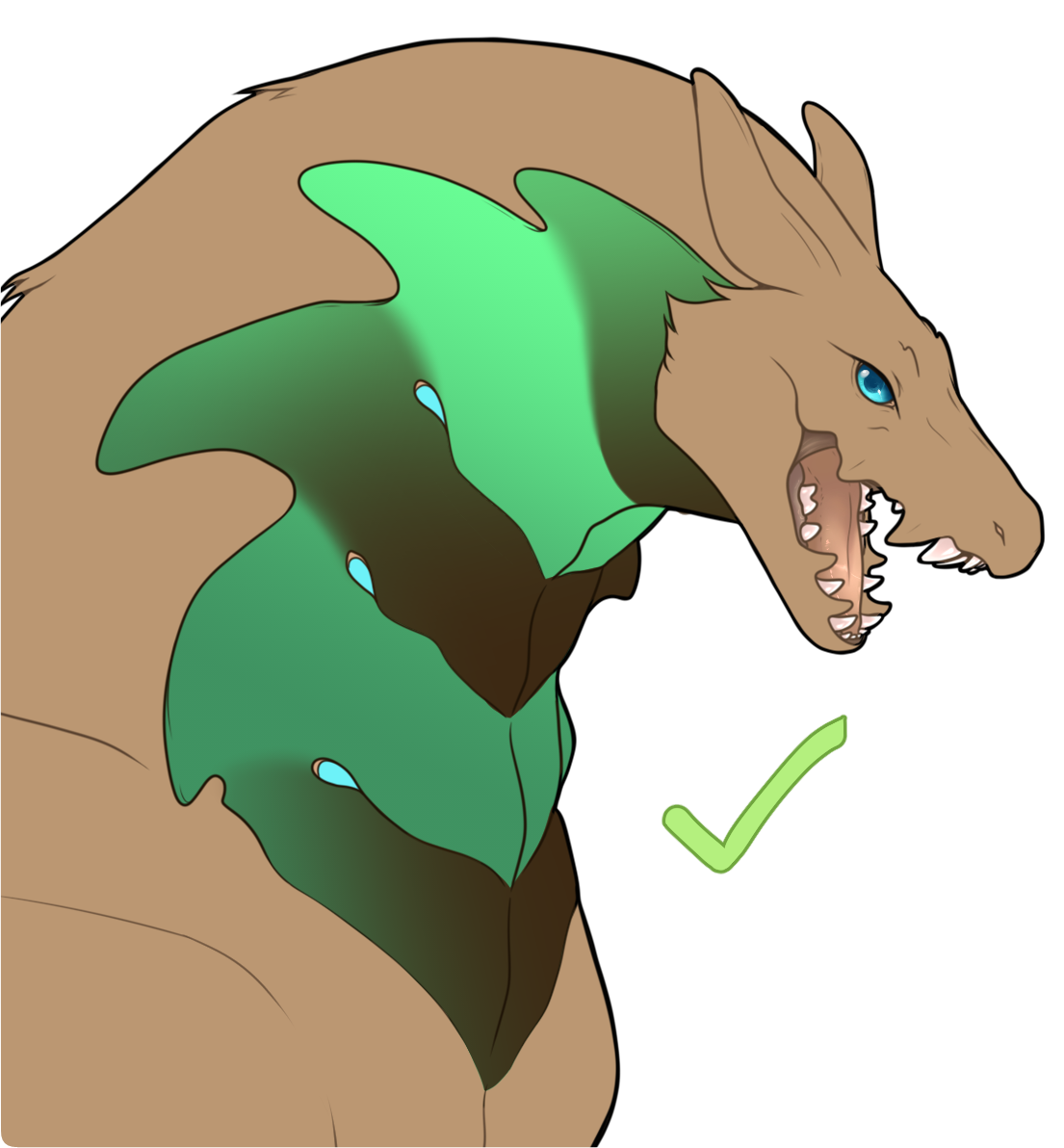 |
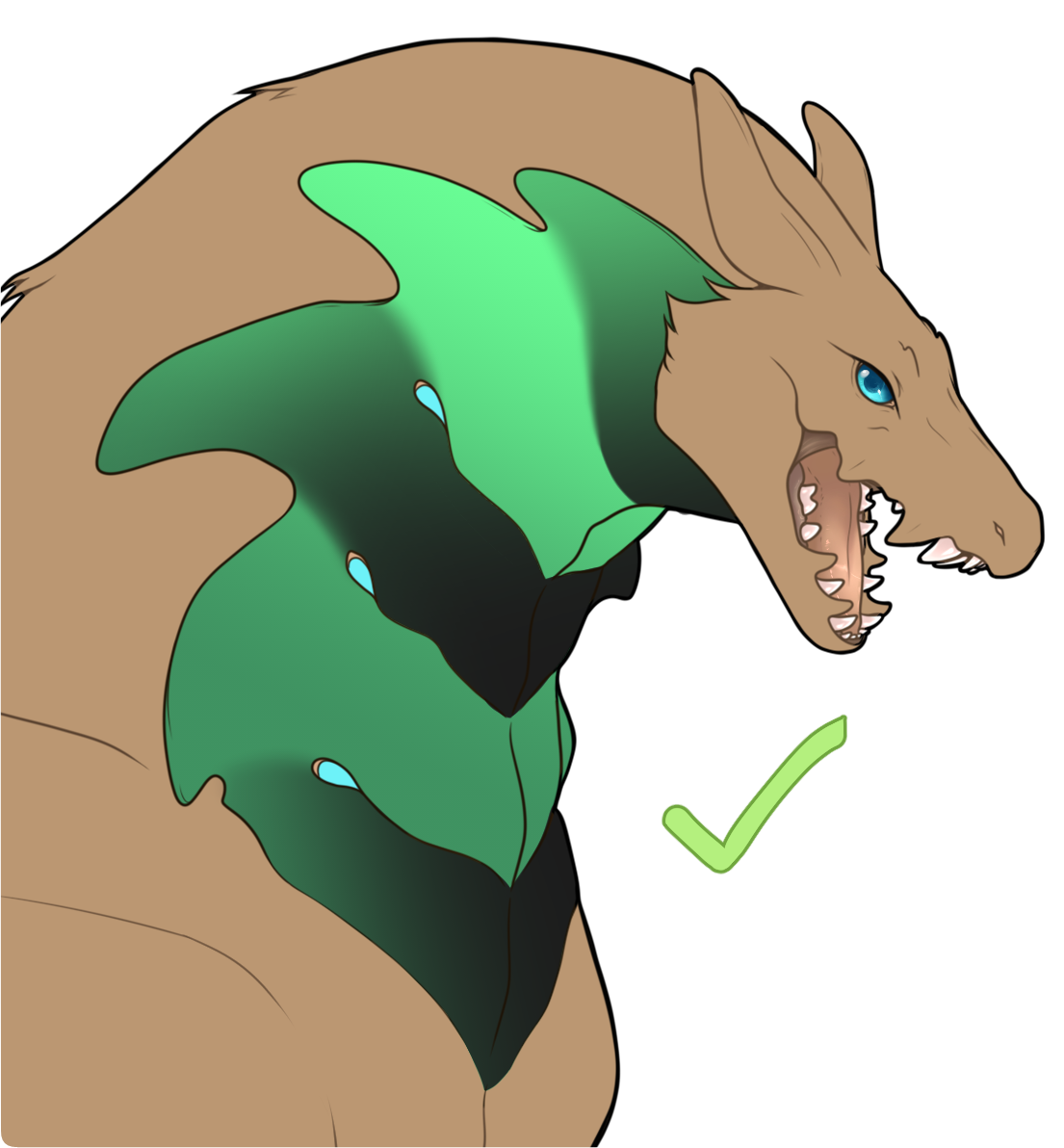 |
 |
| Stripes cannot merge together or branch into other stripes. | Stripes cannot float. They must extend to the edge of the throat plate. | Stripes should be largely horizontal and cannot make large swoops or shapes. | Stripes cannot fade from the centre. |
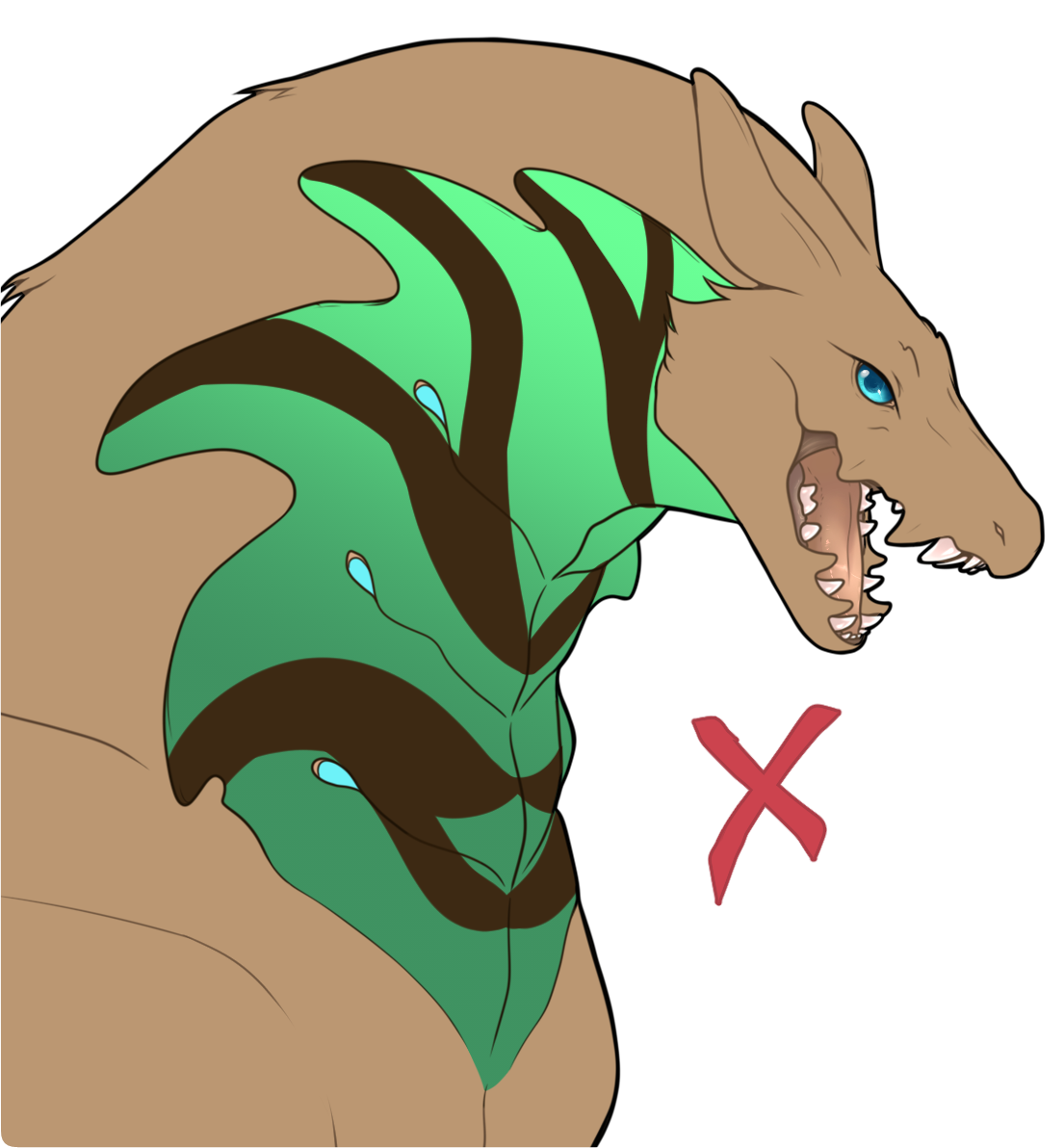 |
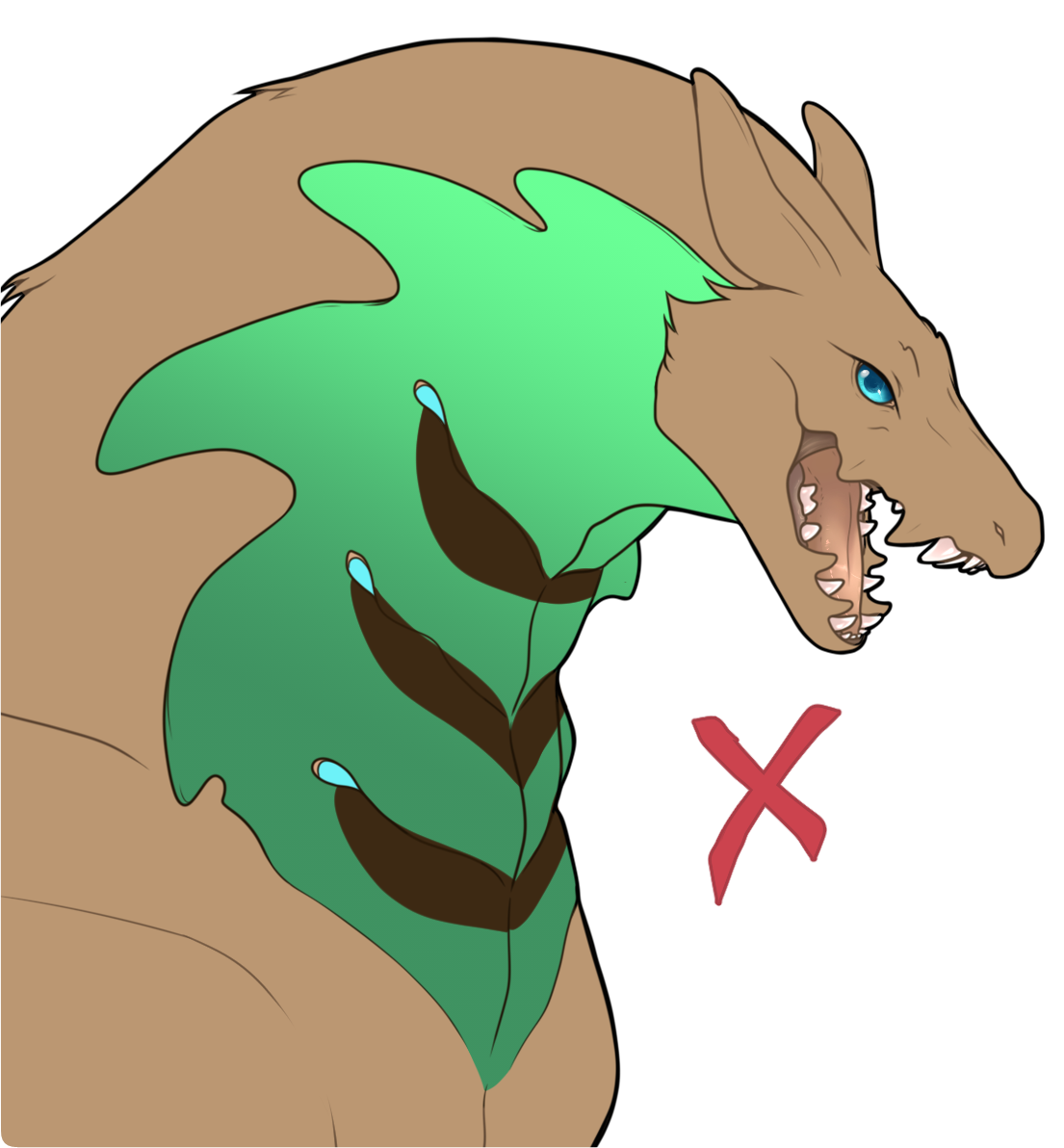 |
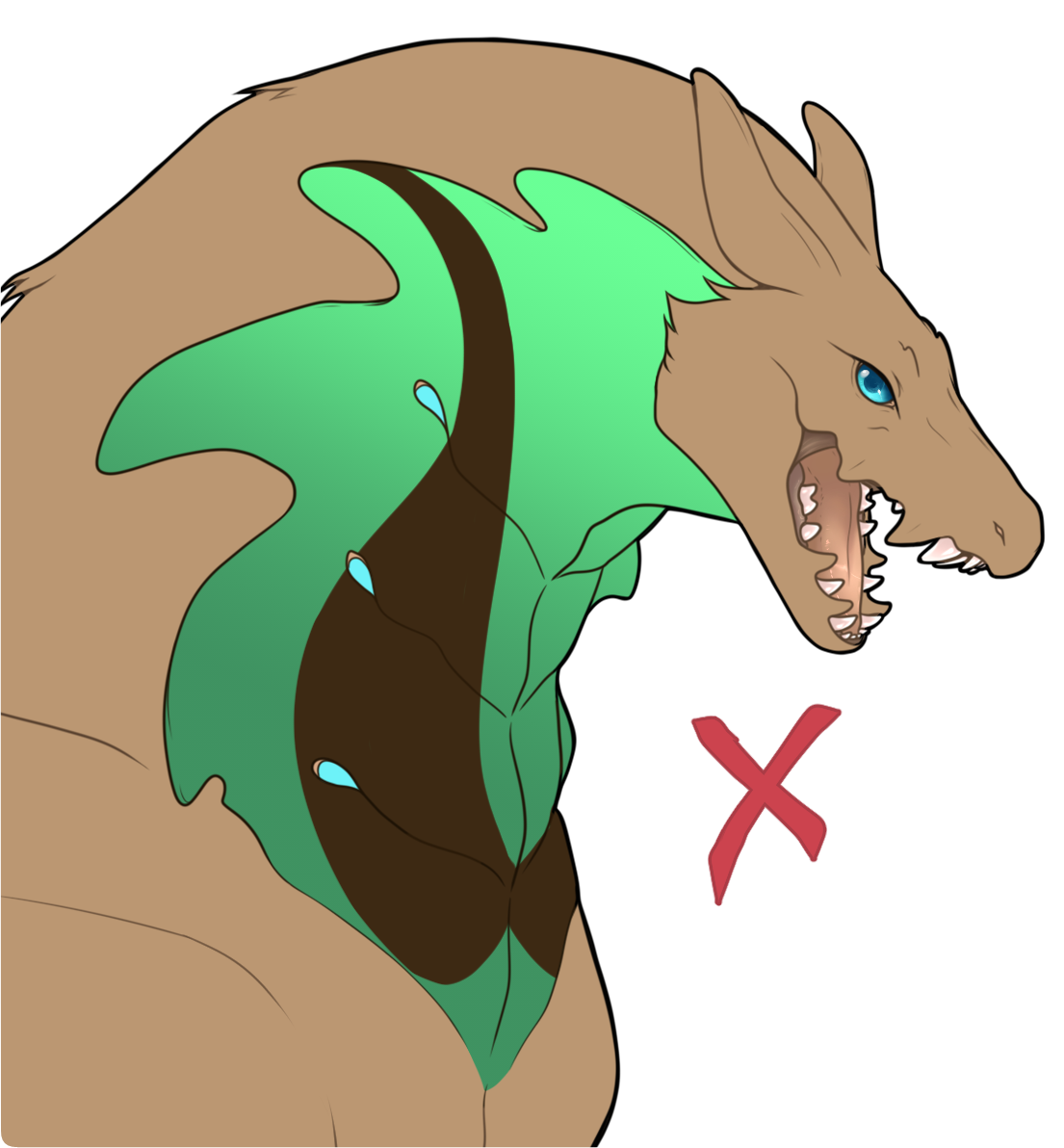 |
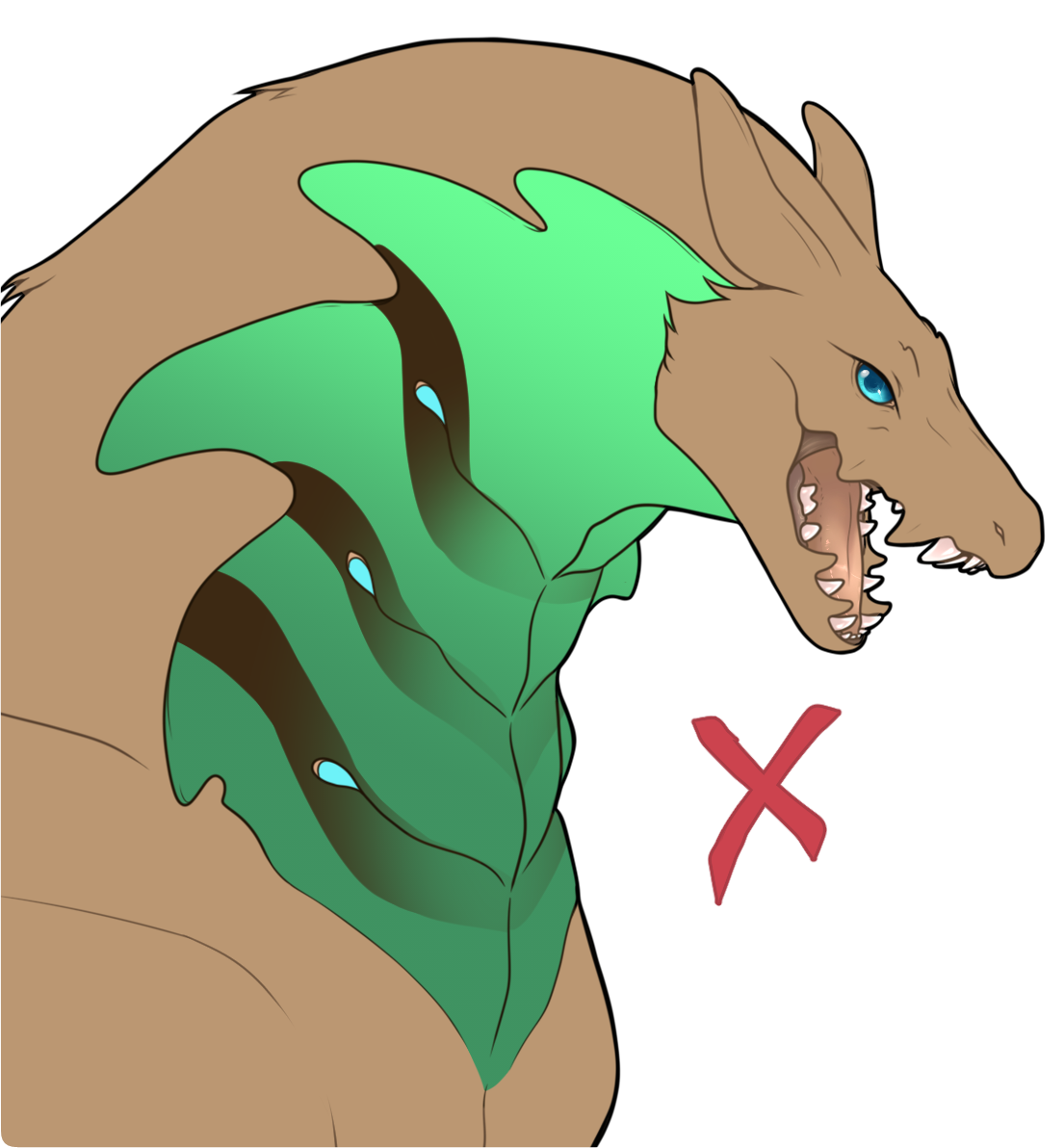 |
Common Mistakes
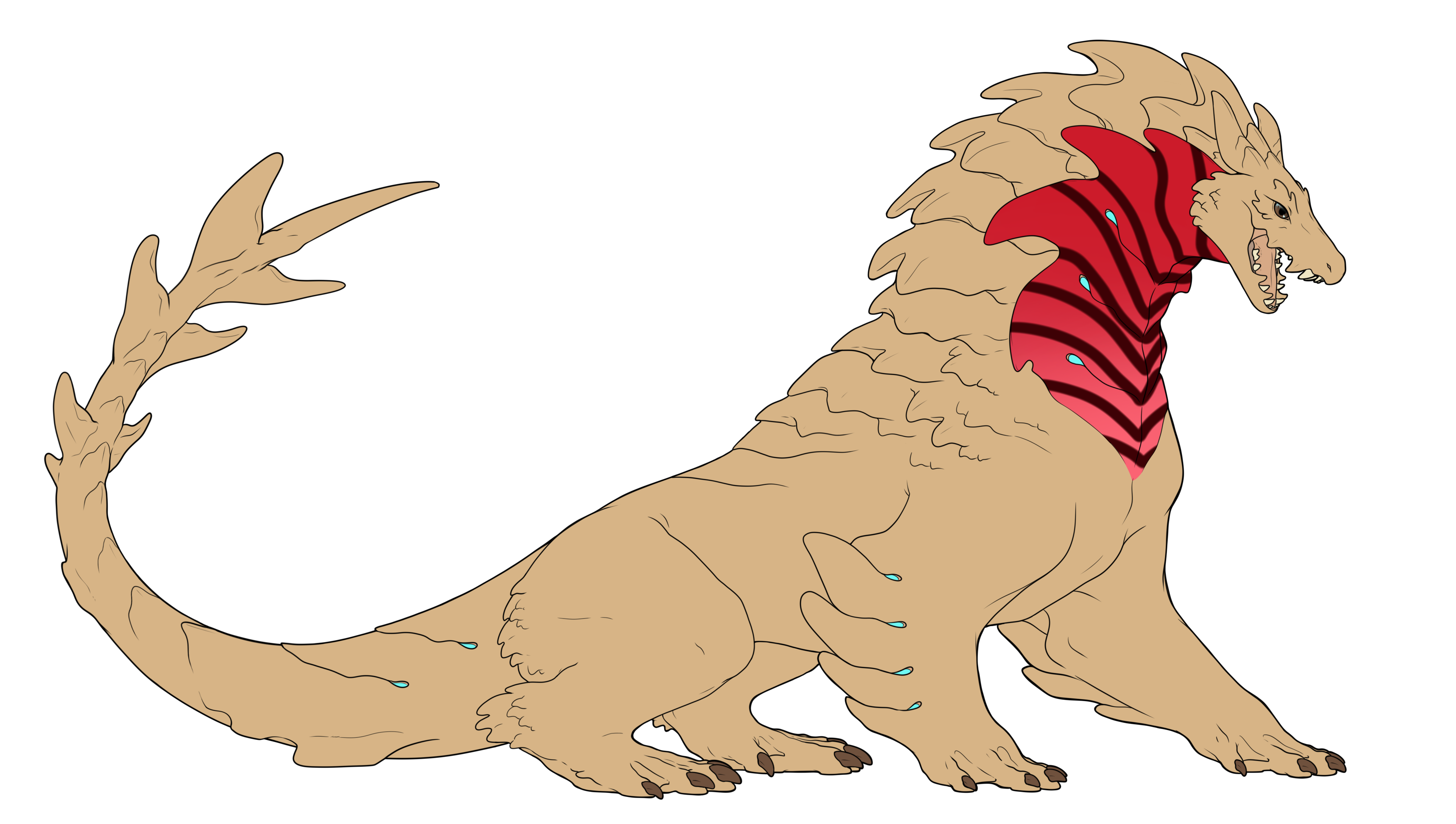 |
The number of stripes is too high. Maximum of 5 stripes are allowed. Additionally, you should not use the somber slider of whatever color your coating rolled. Stripes need to be picked from your base coat slider! |
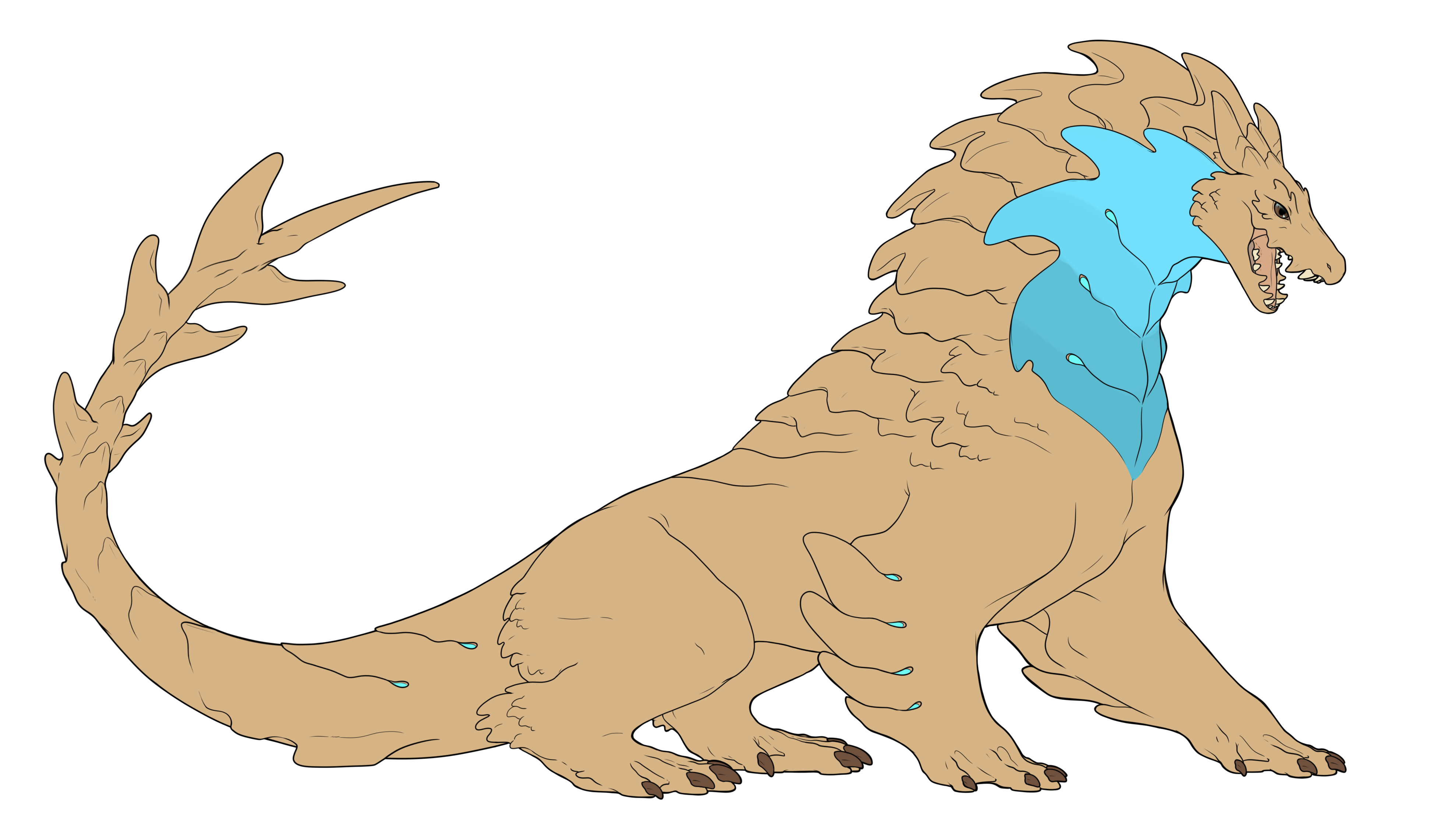 |
There needs to be a soft gradient, even though you are allowed striping, this is not how it should ever look. |
When coating appears in its dominant form it loosely resembles the markings of cobras. You are no longer restricted to simply stripes and may utilise spots, stripes, or other natural patterns that have a snake-like appearance to create a striking pattern.
Additionally, you may now use white shapes on the design. White may be color picked from the white slider, or follow our regular white marking rules. The white markings can exhibit nuances but should not fade into the base like the 'stripe' portion can. 
| Dominant Coating with 3 colors. Here we have Lacuna with Dom Ruby Coating, with the use of Lacuna's Somber slider and white pattern. |
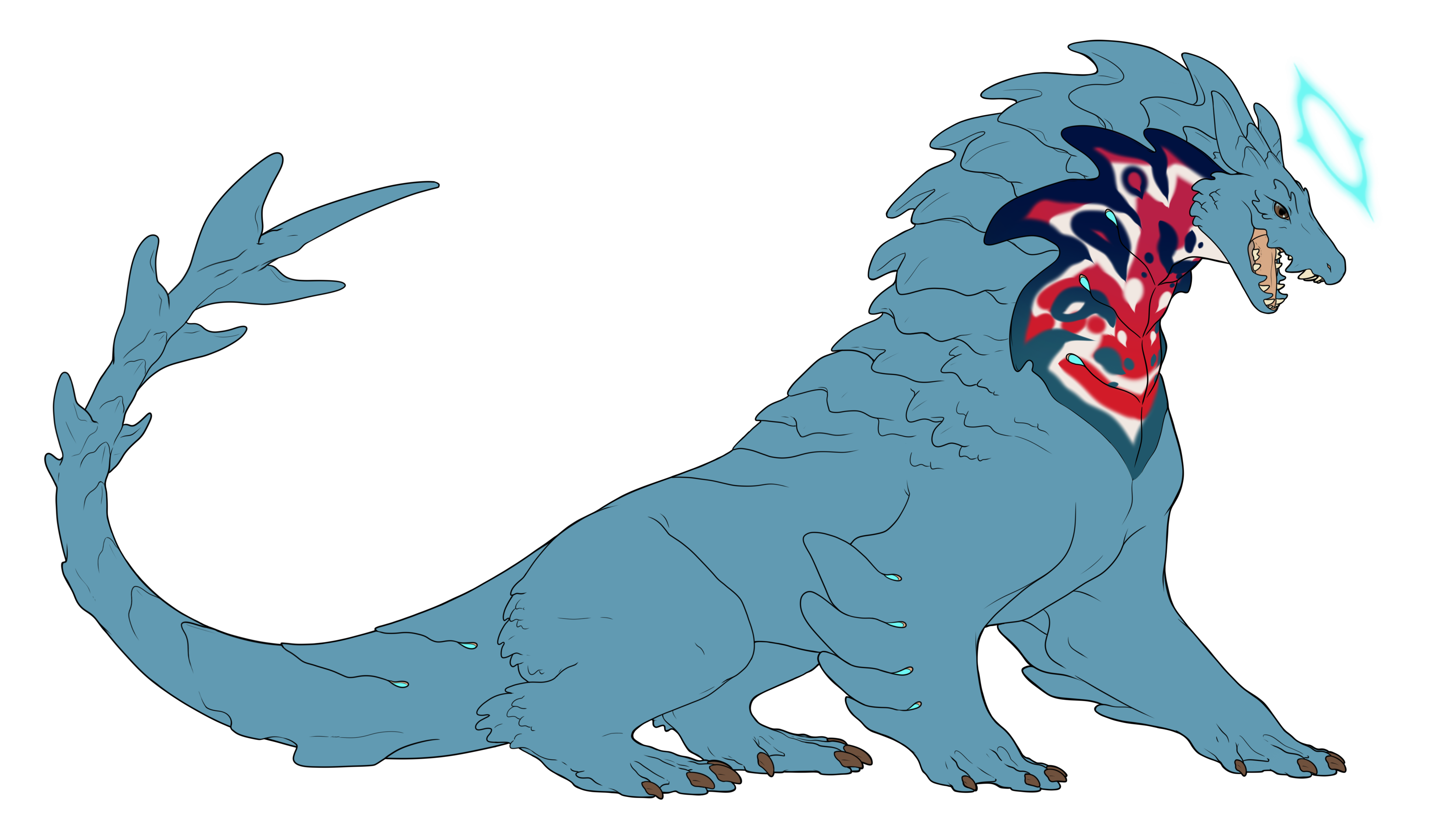 |
Dominant Examples
| A cobra-like design. Although the stripes layer no longer looks like stripes, it still uses the basecoat's somber slider for its color. | The same design, this time using the black slider rather than the basecoat's somber slider. | Black 'stripe' variant with fade. Notice the white does not fade. | White cannot fade. |
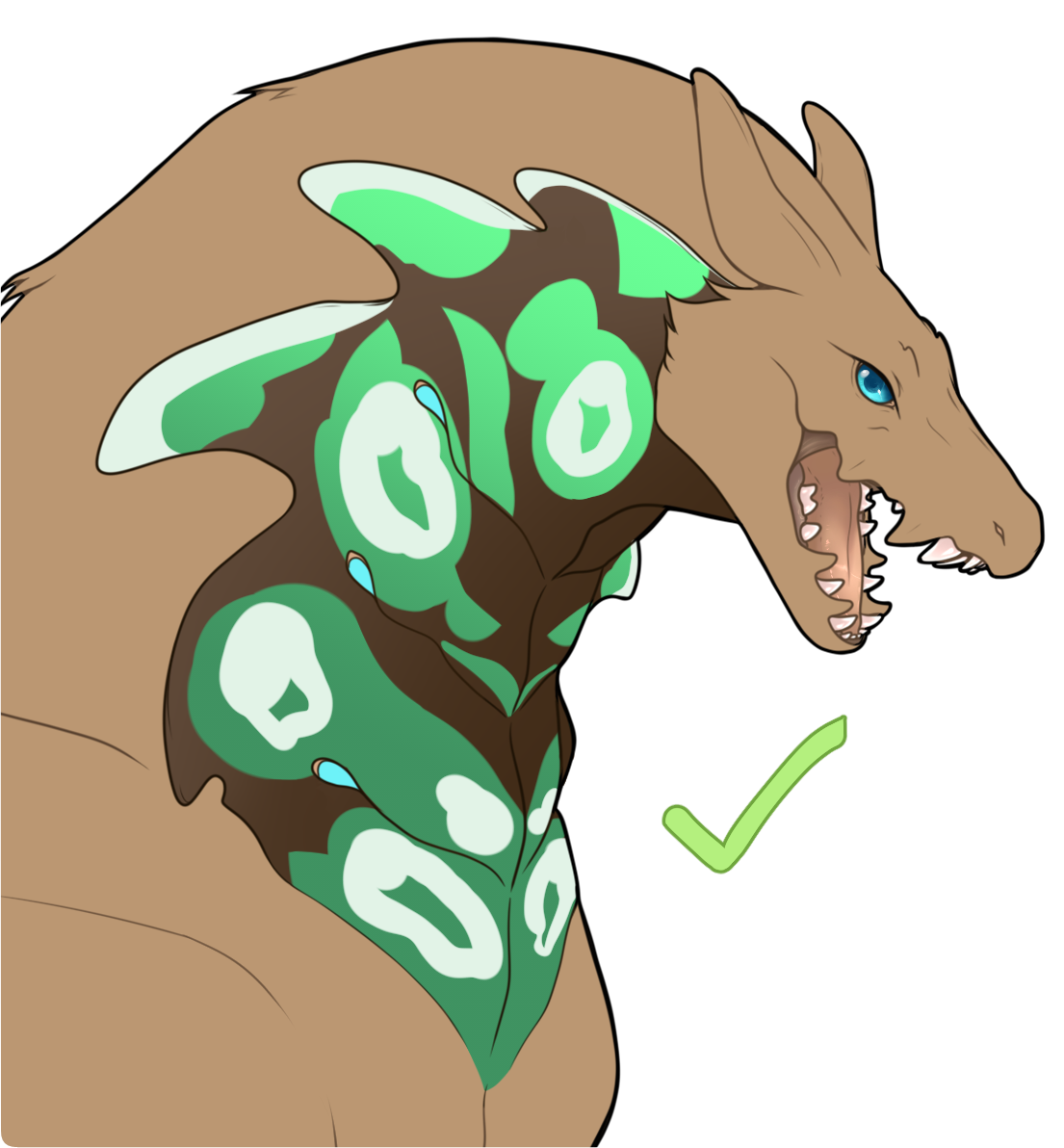 |
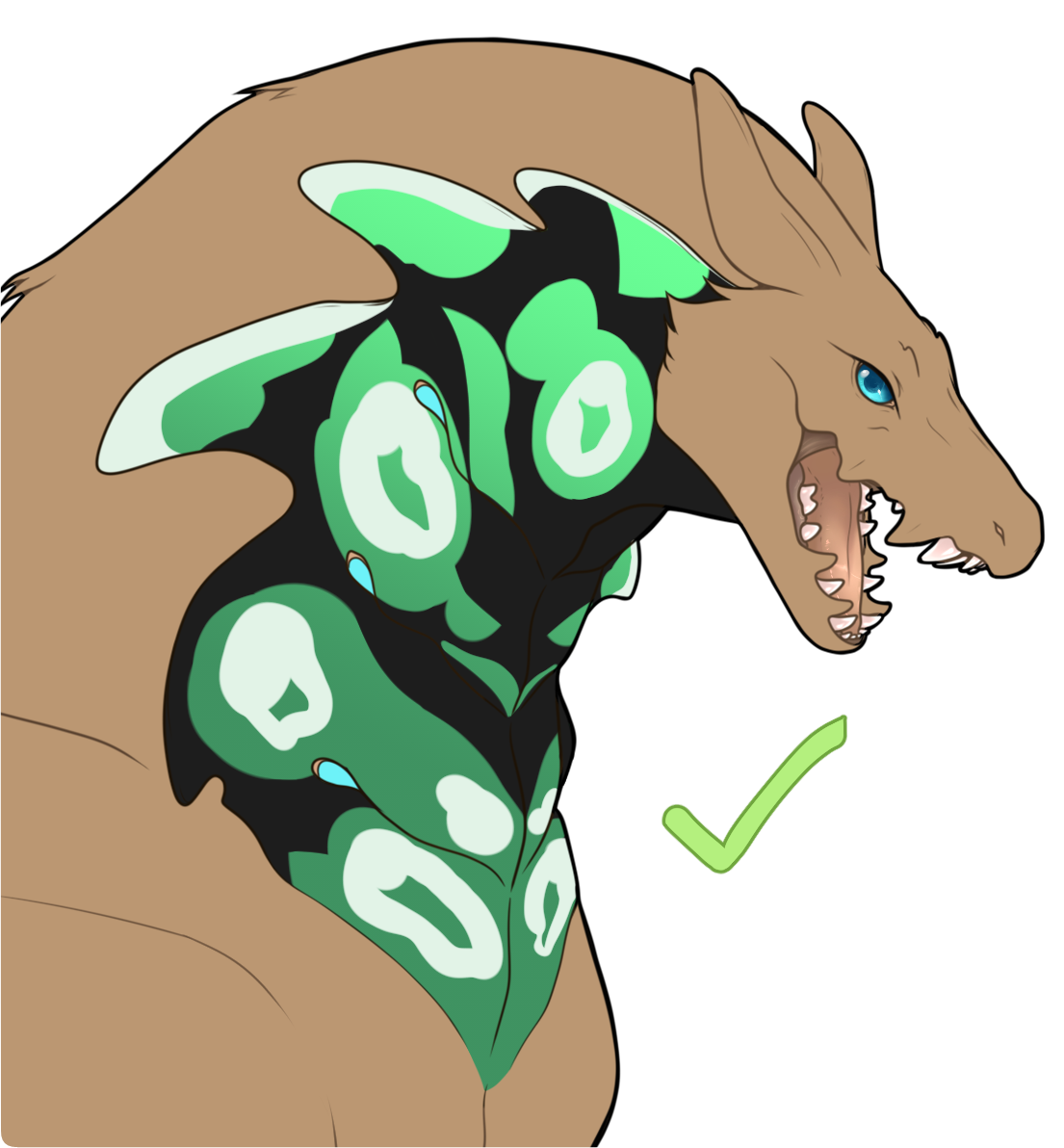 |
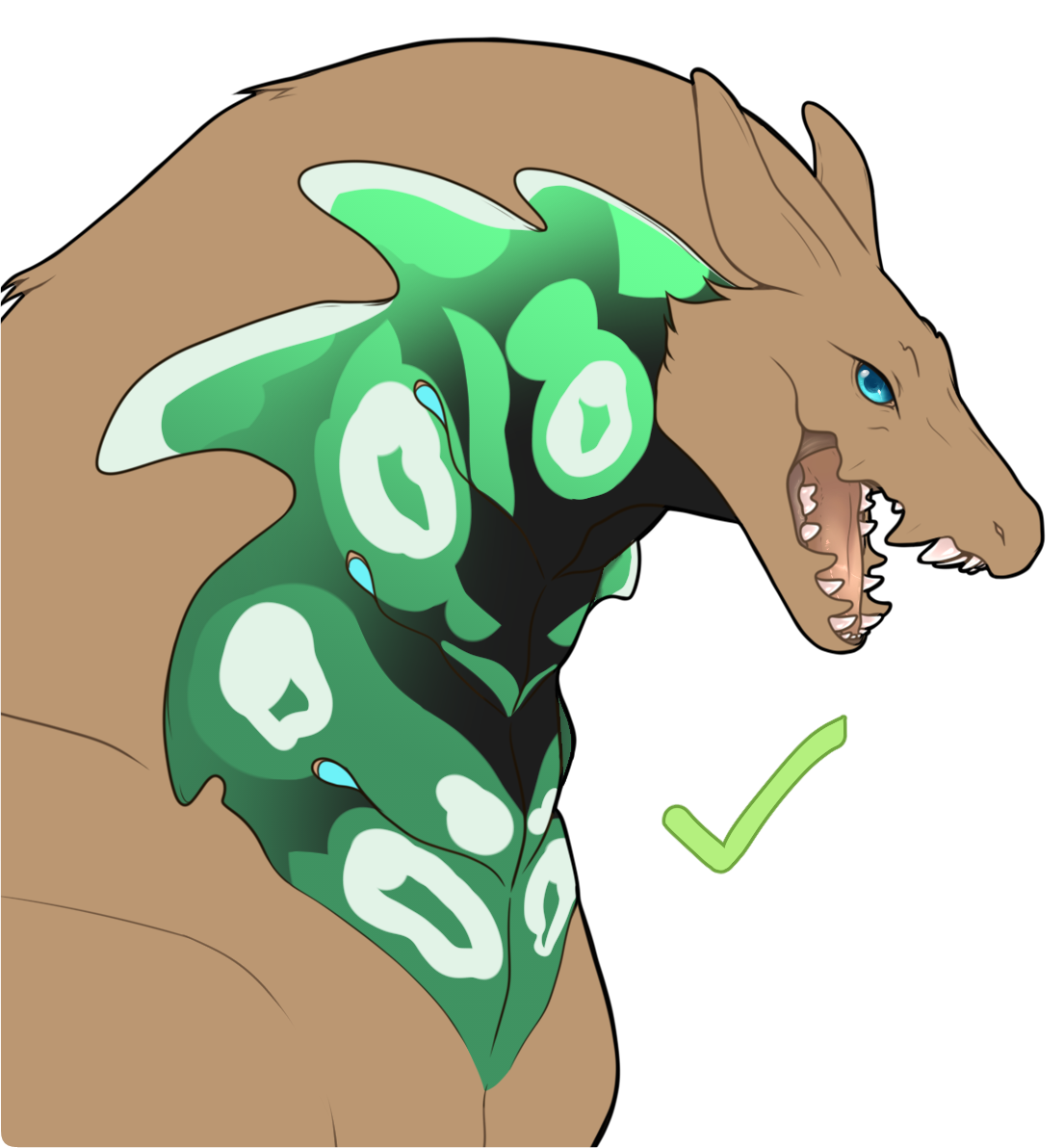 |
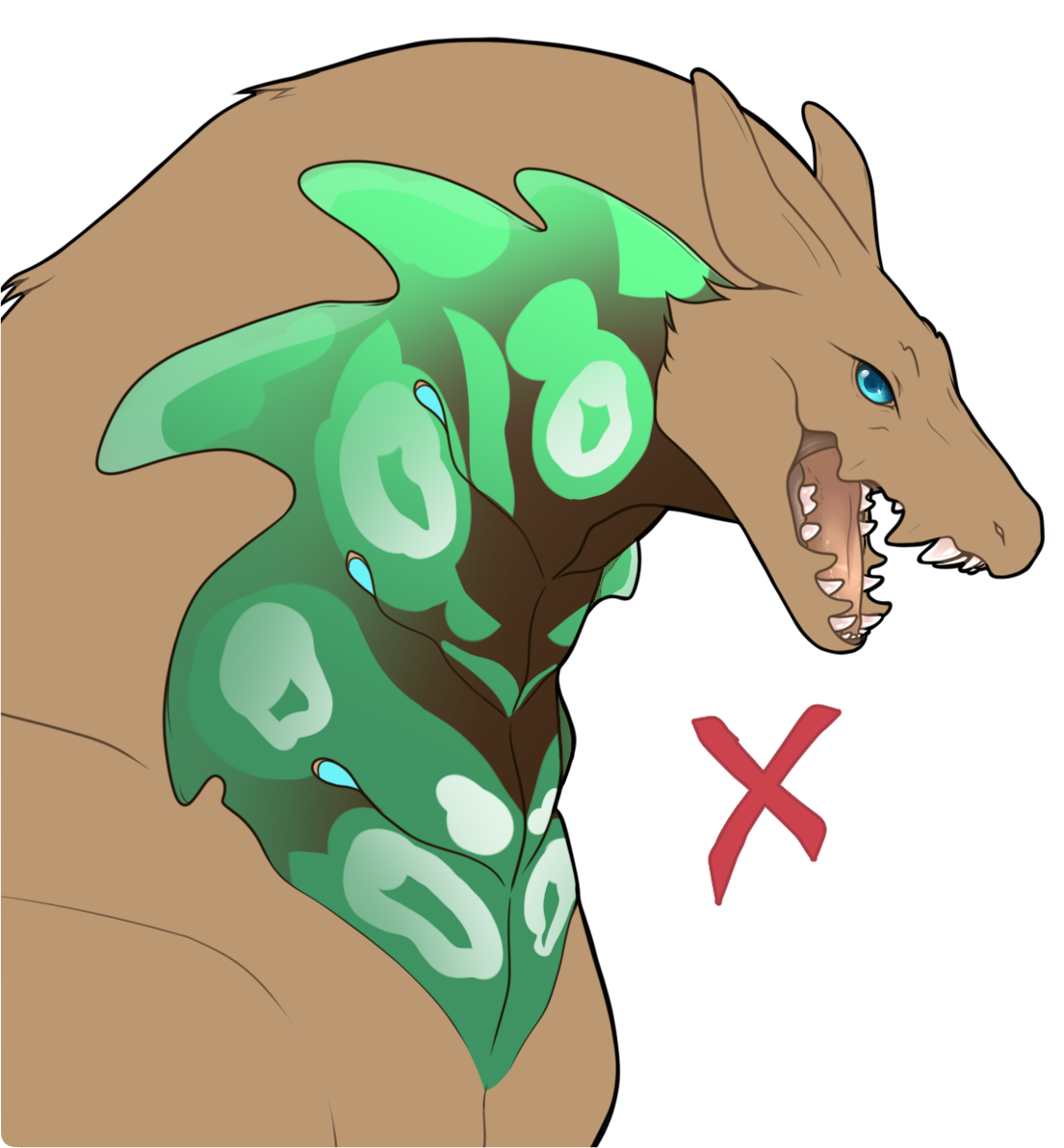 |
| Here we have mixed edge types on the white and the 'stripes'. | The same mixed edges, but the stripes are also fading. | White cannot be replaced by black. Only the 'stripes' can be black. | While cobra 'faces/eyes' are permitted, dominant coating that forms a picture will be denied. |
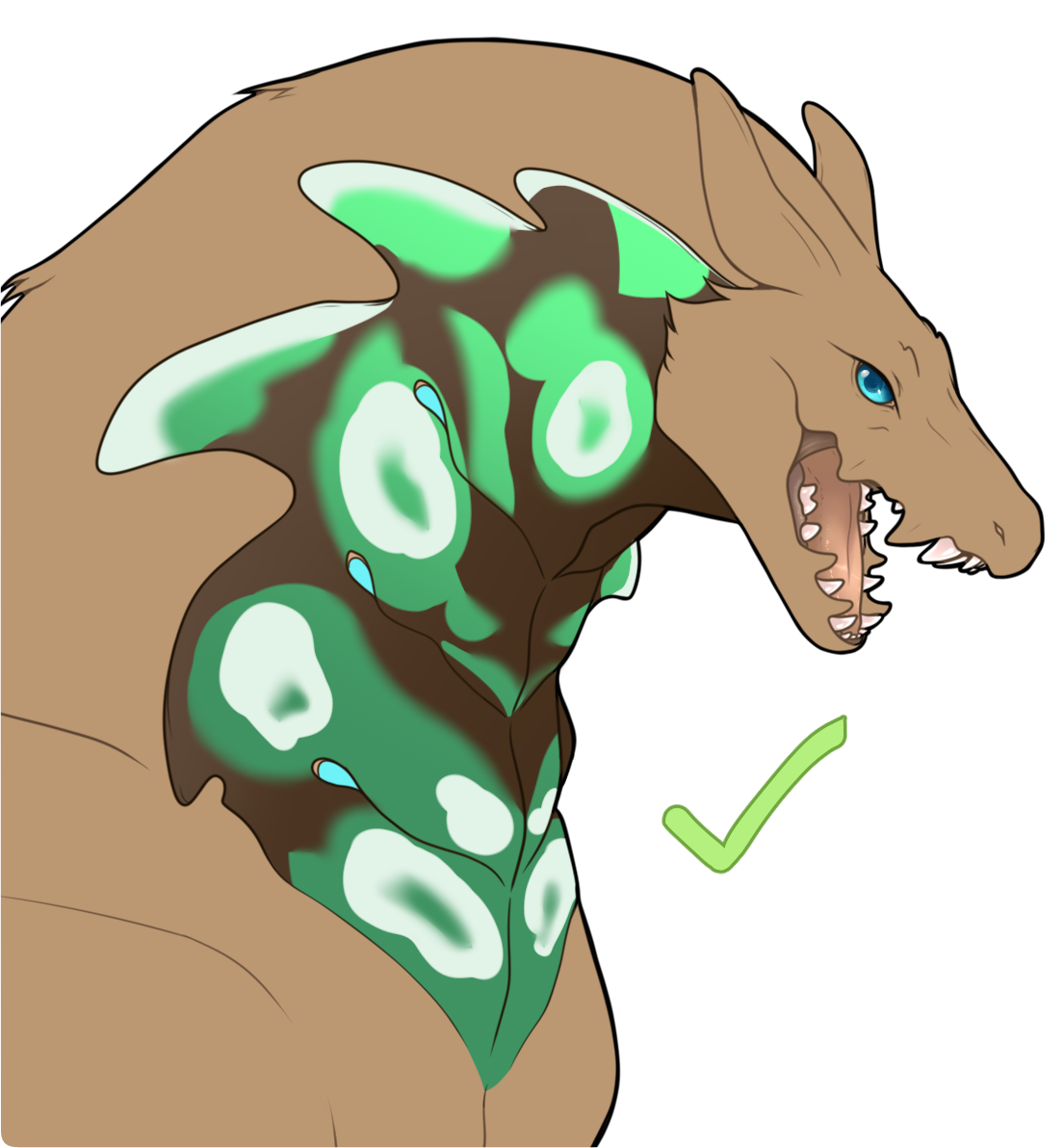 |
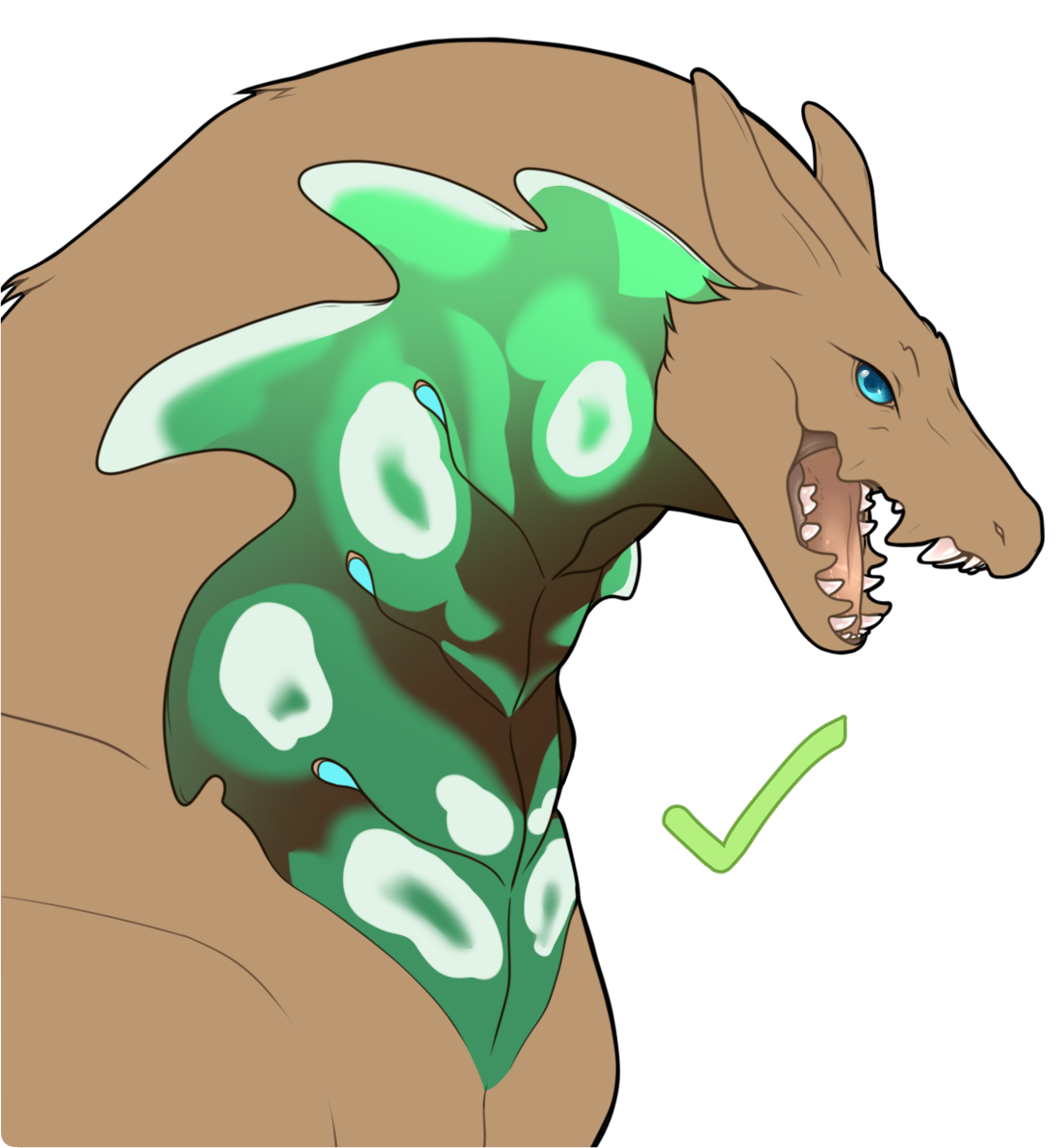 |
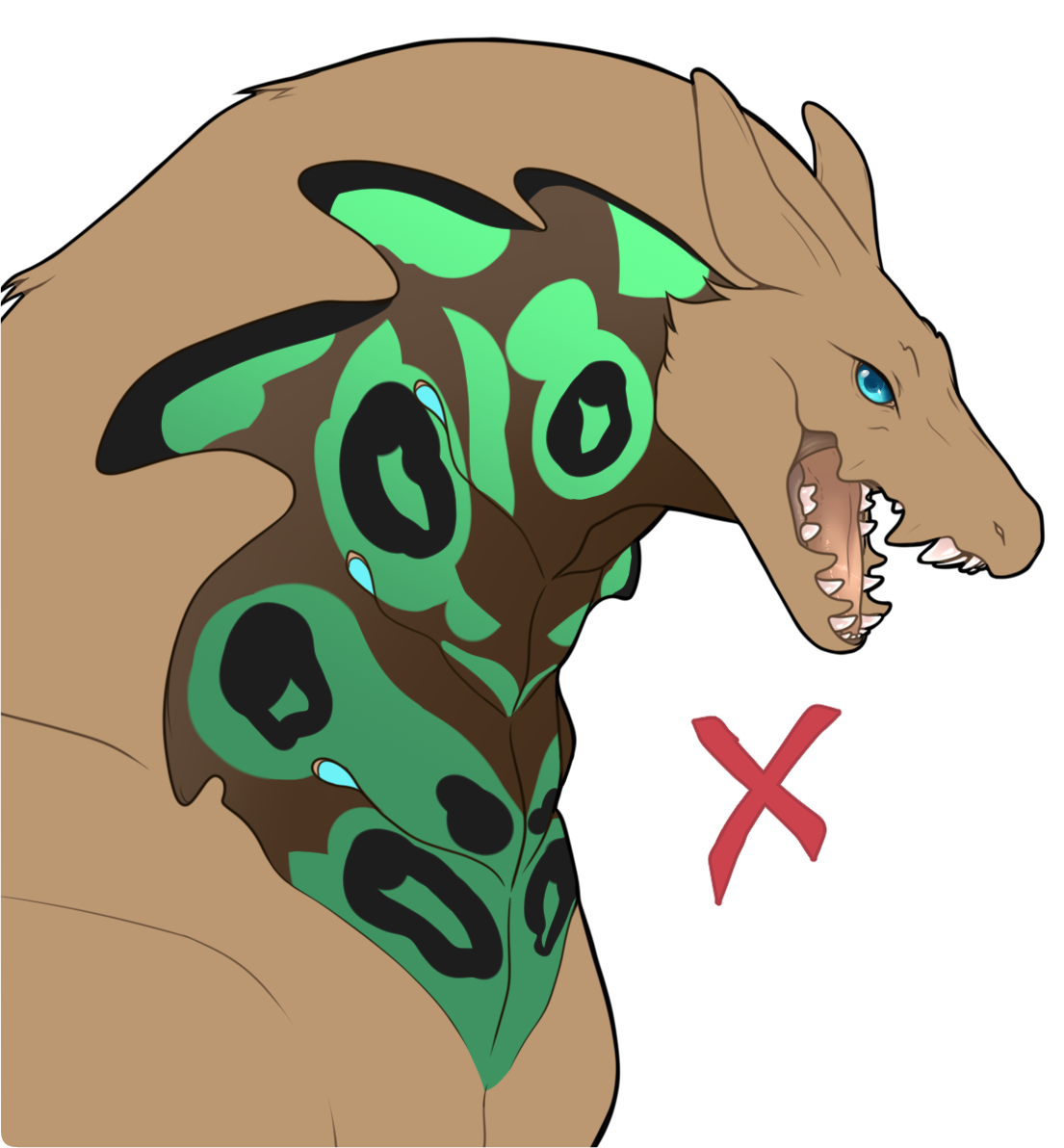 |
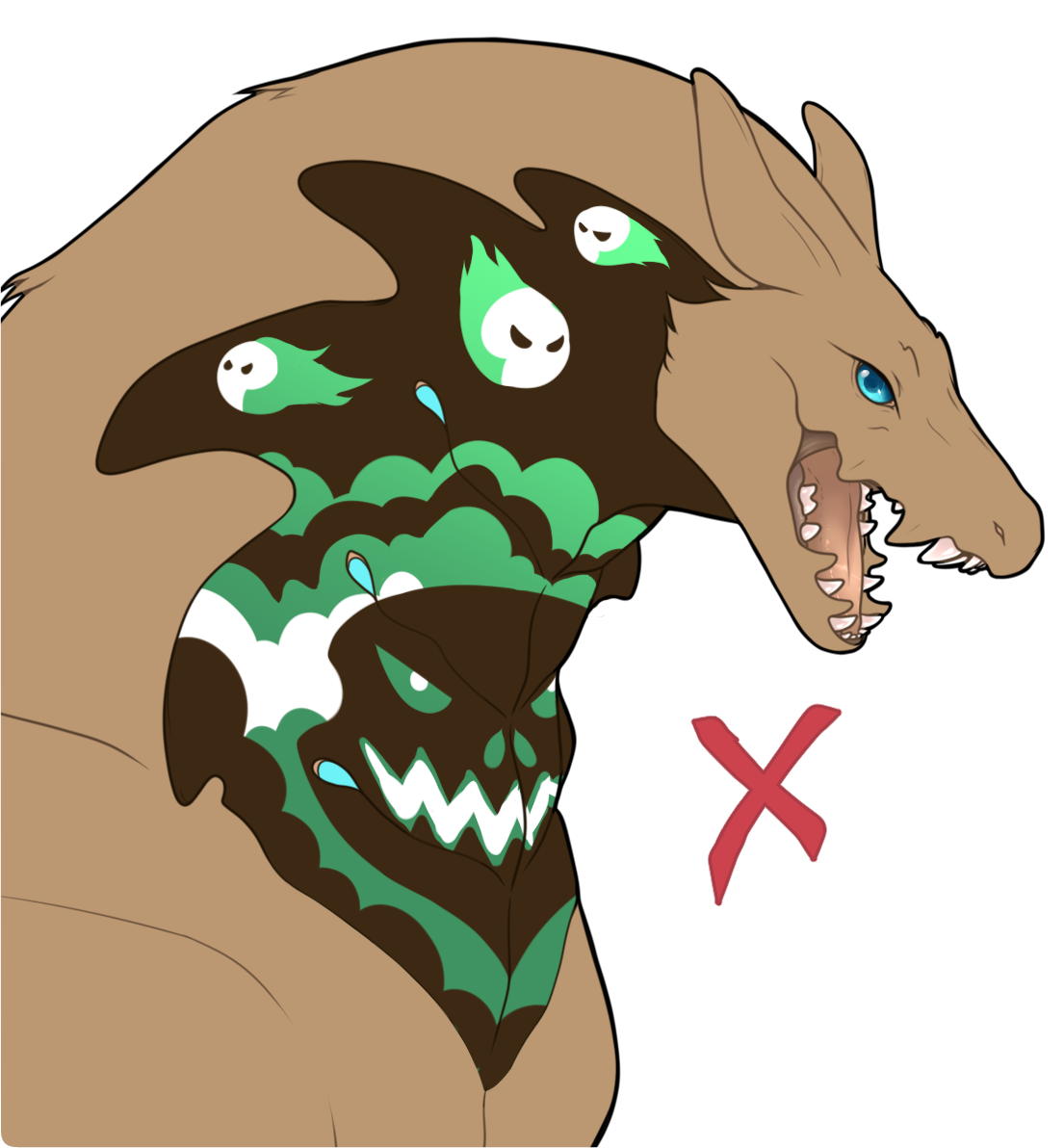 |

